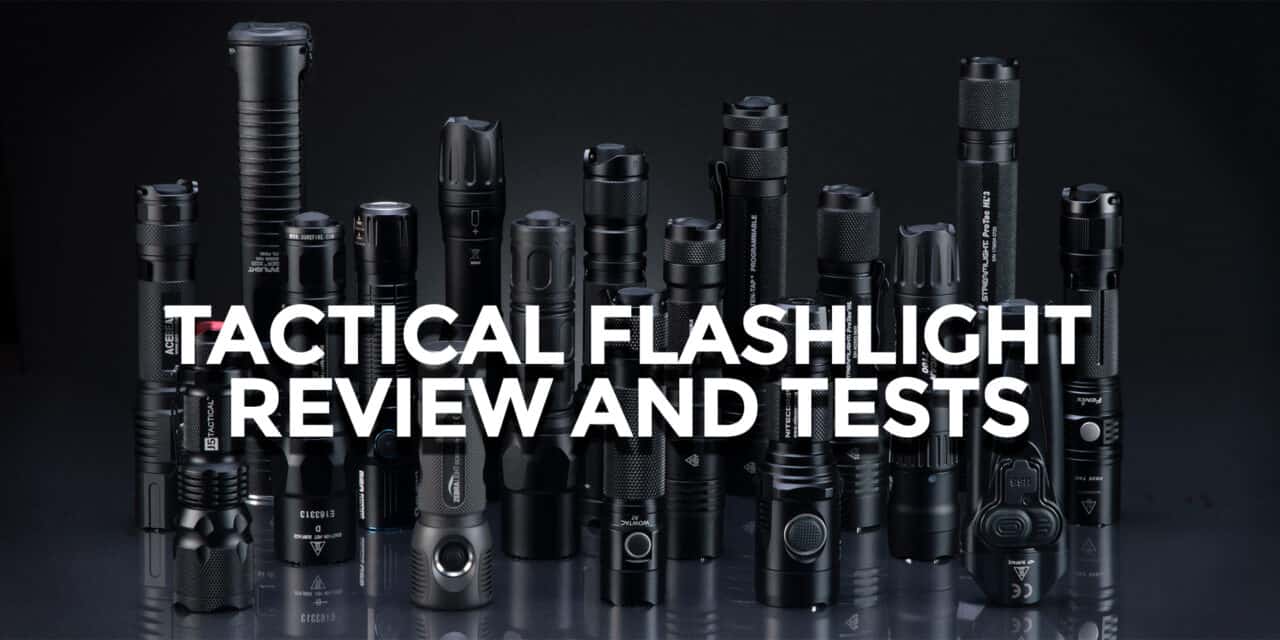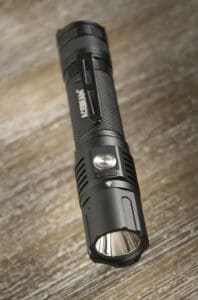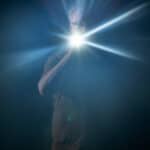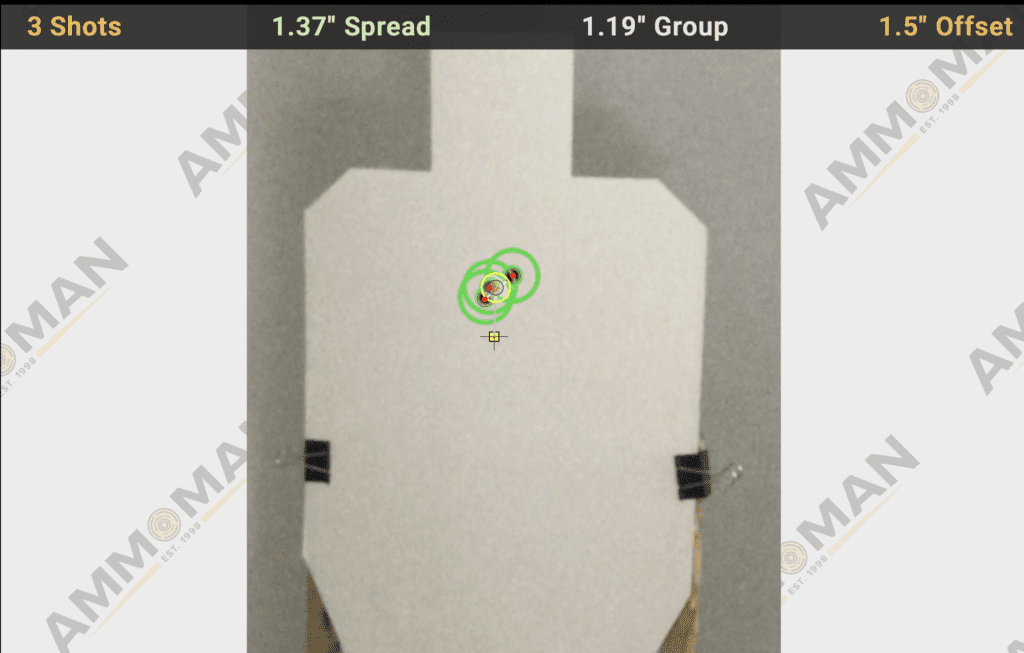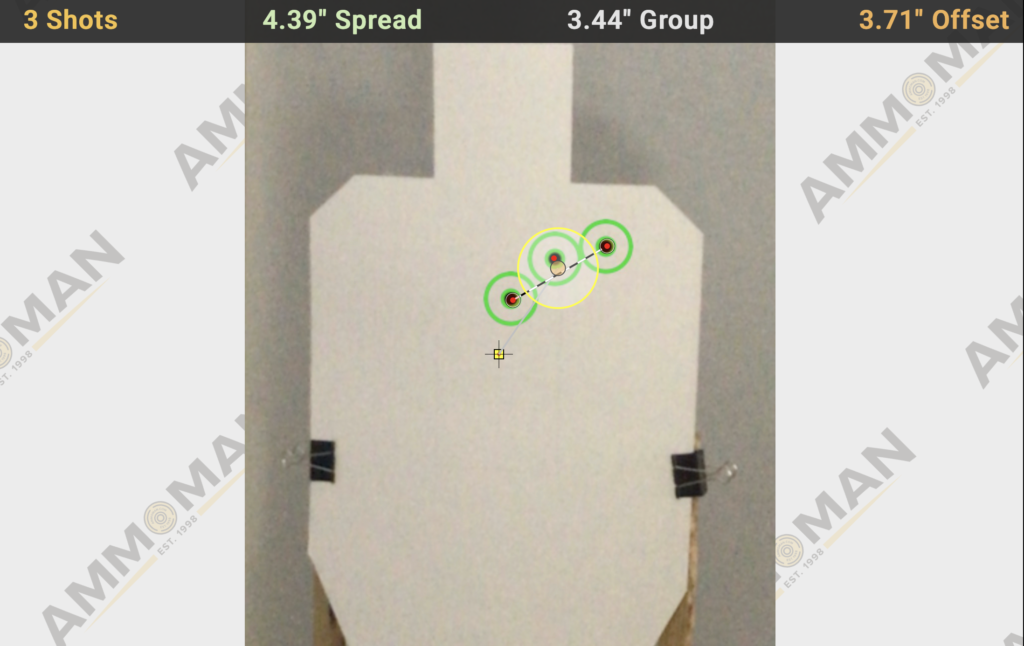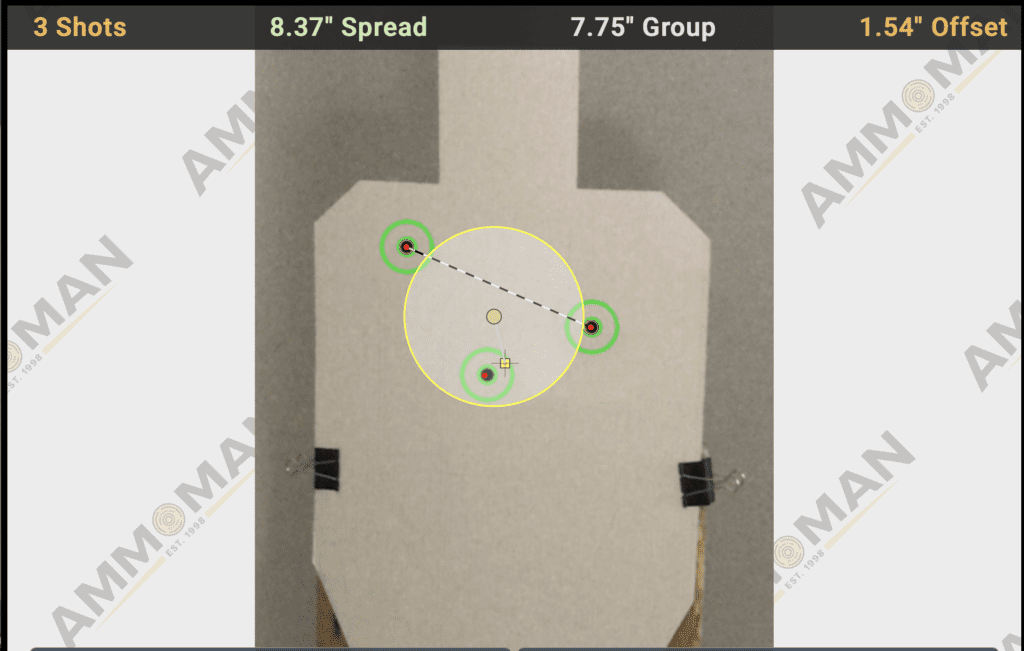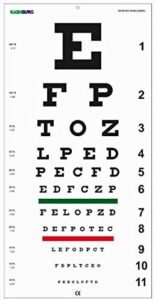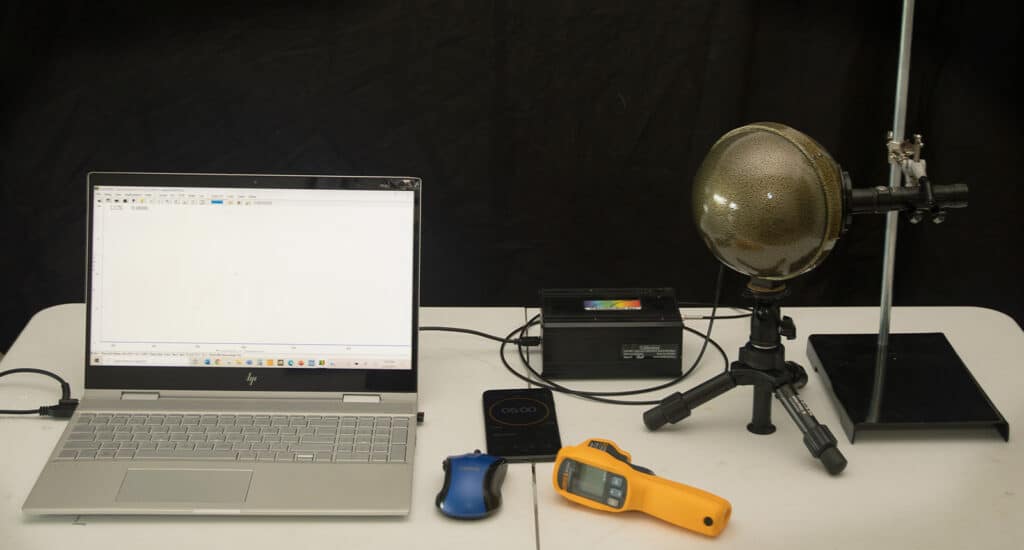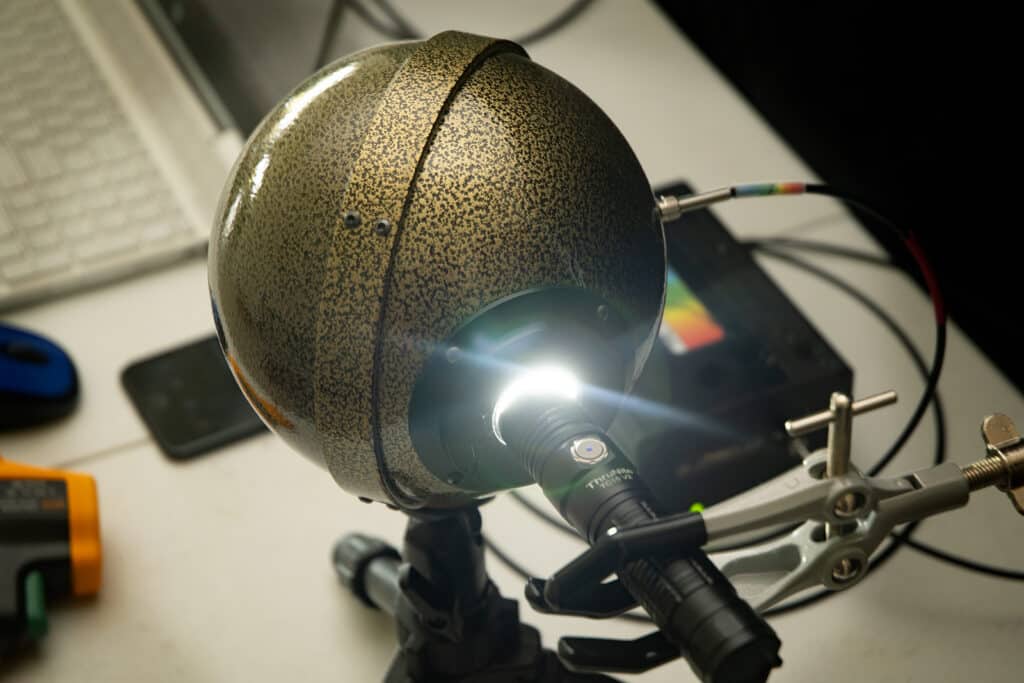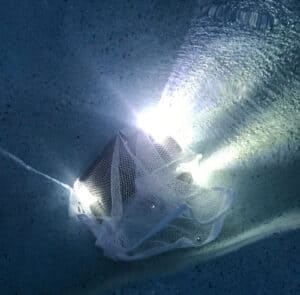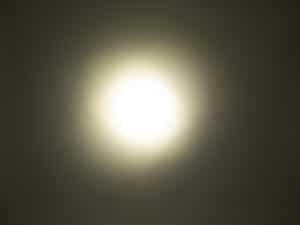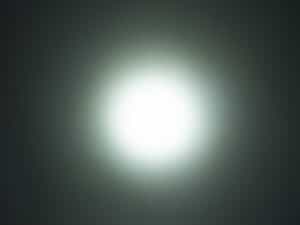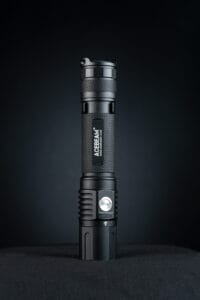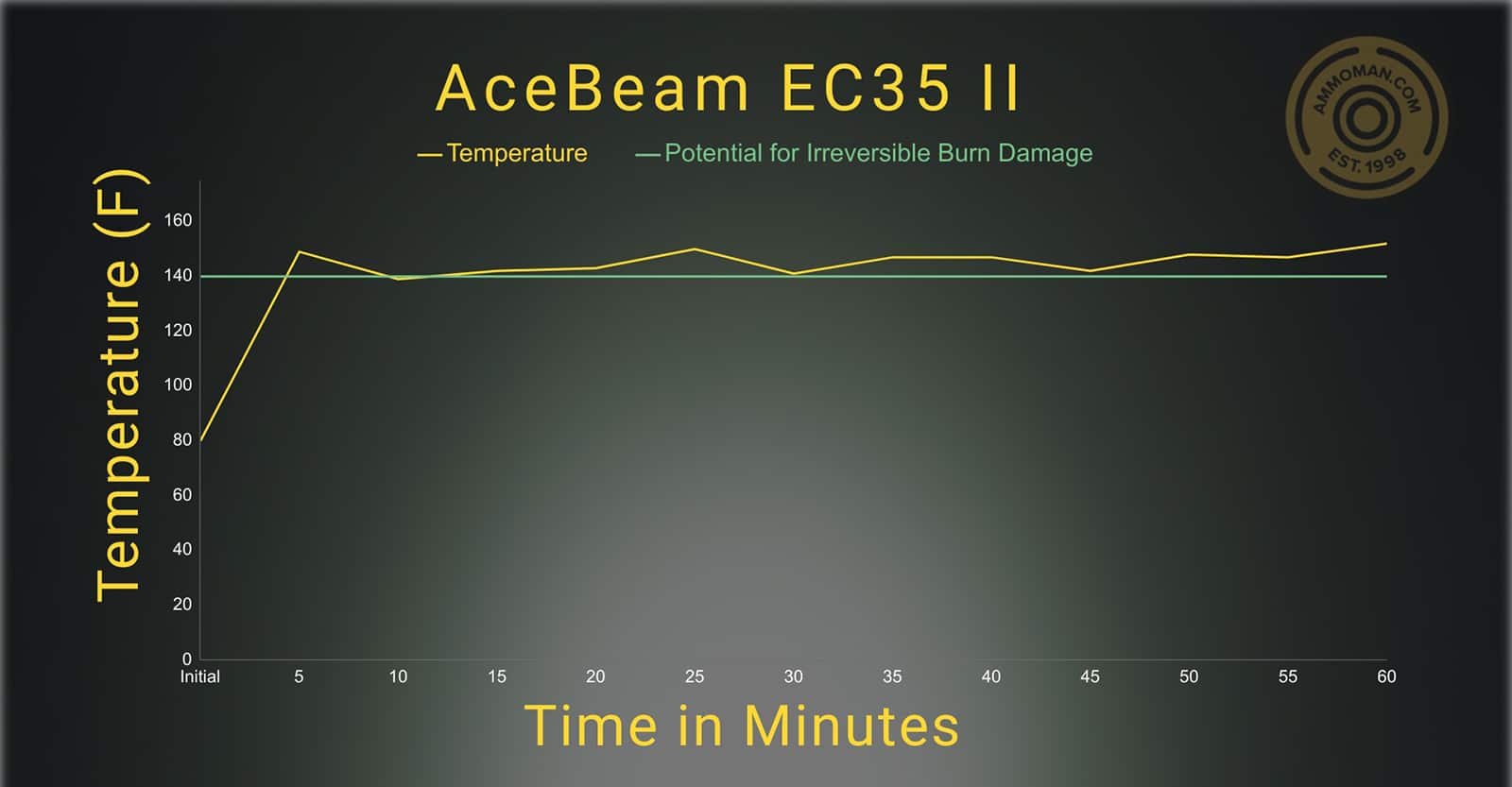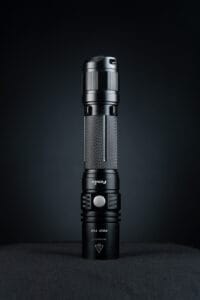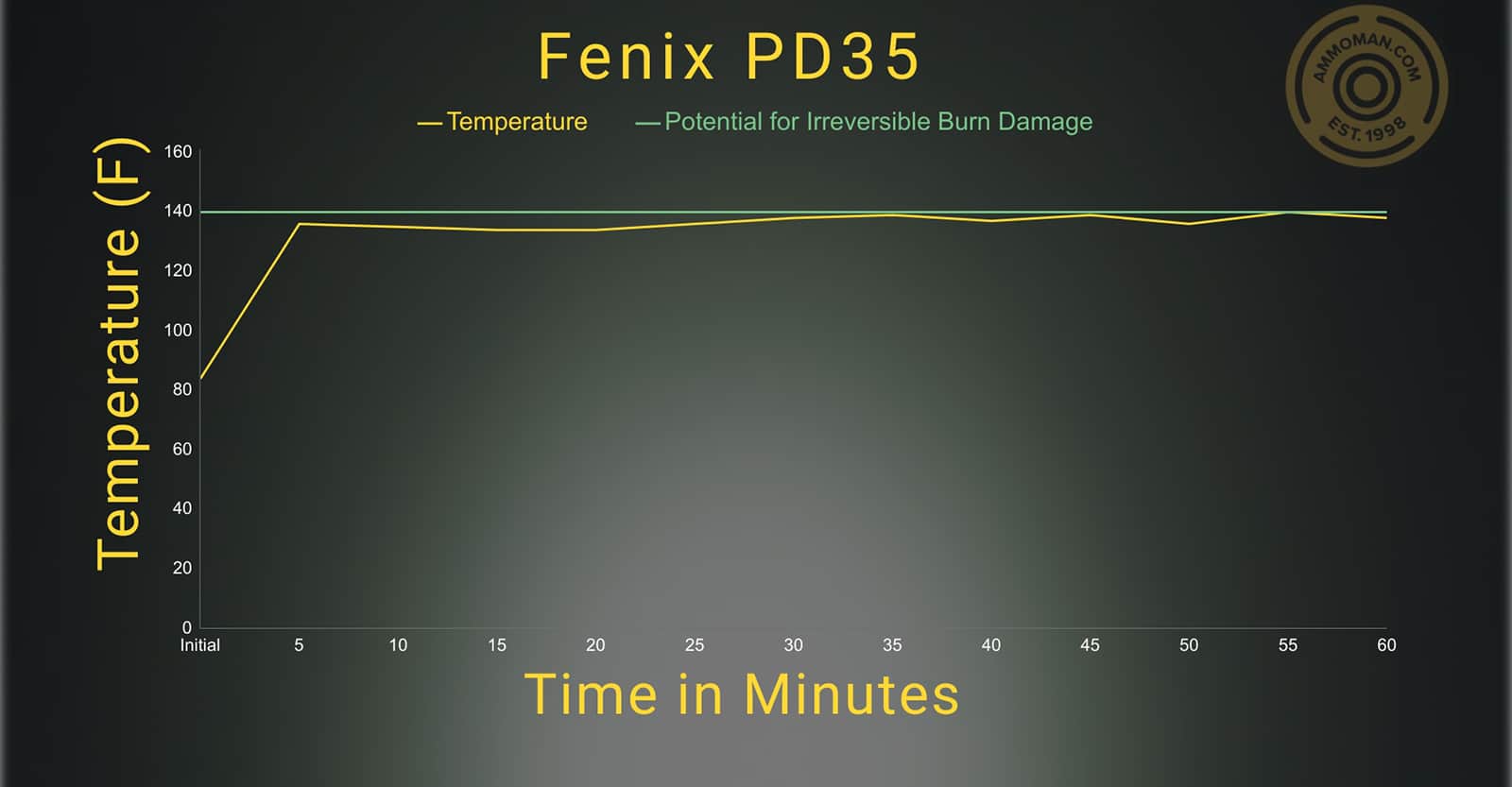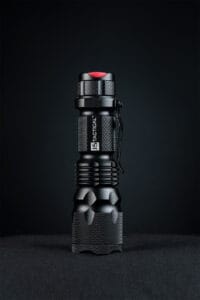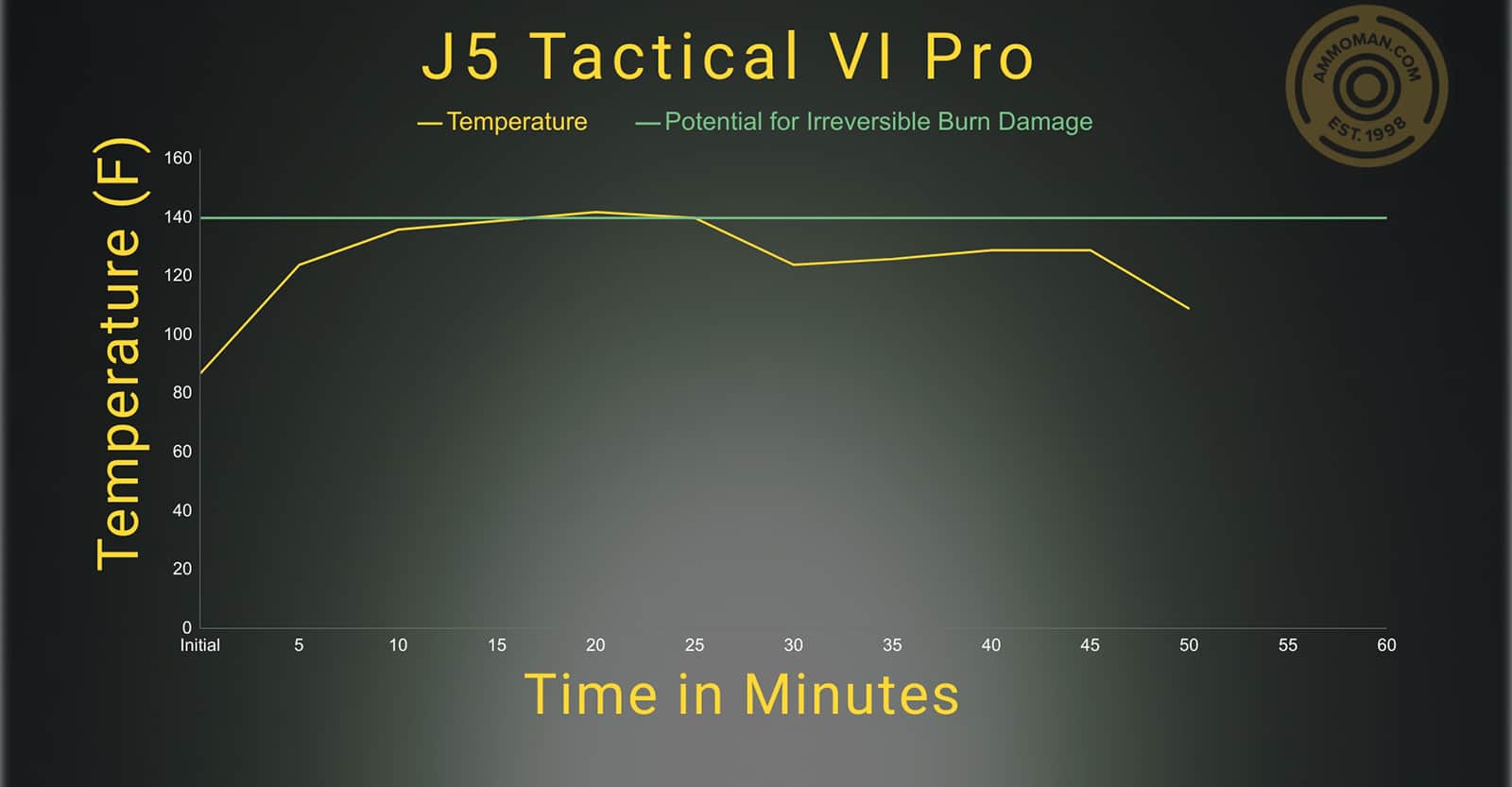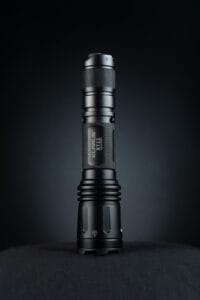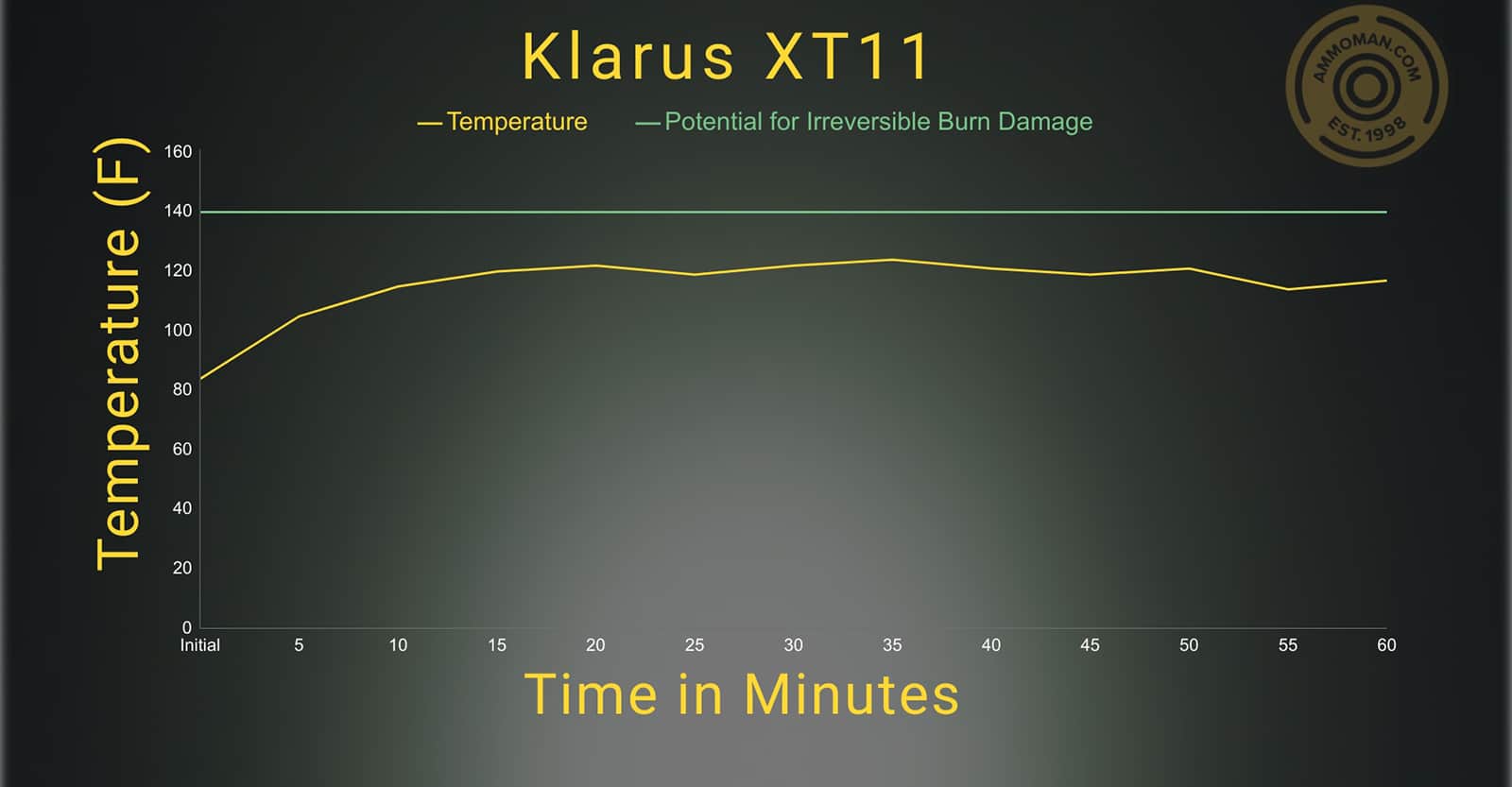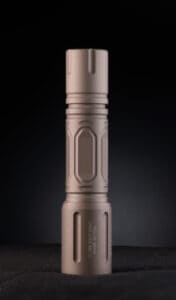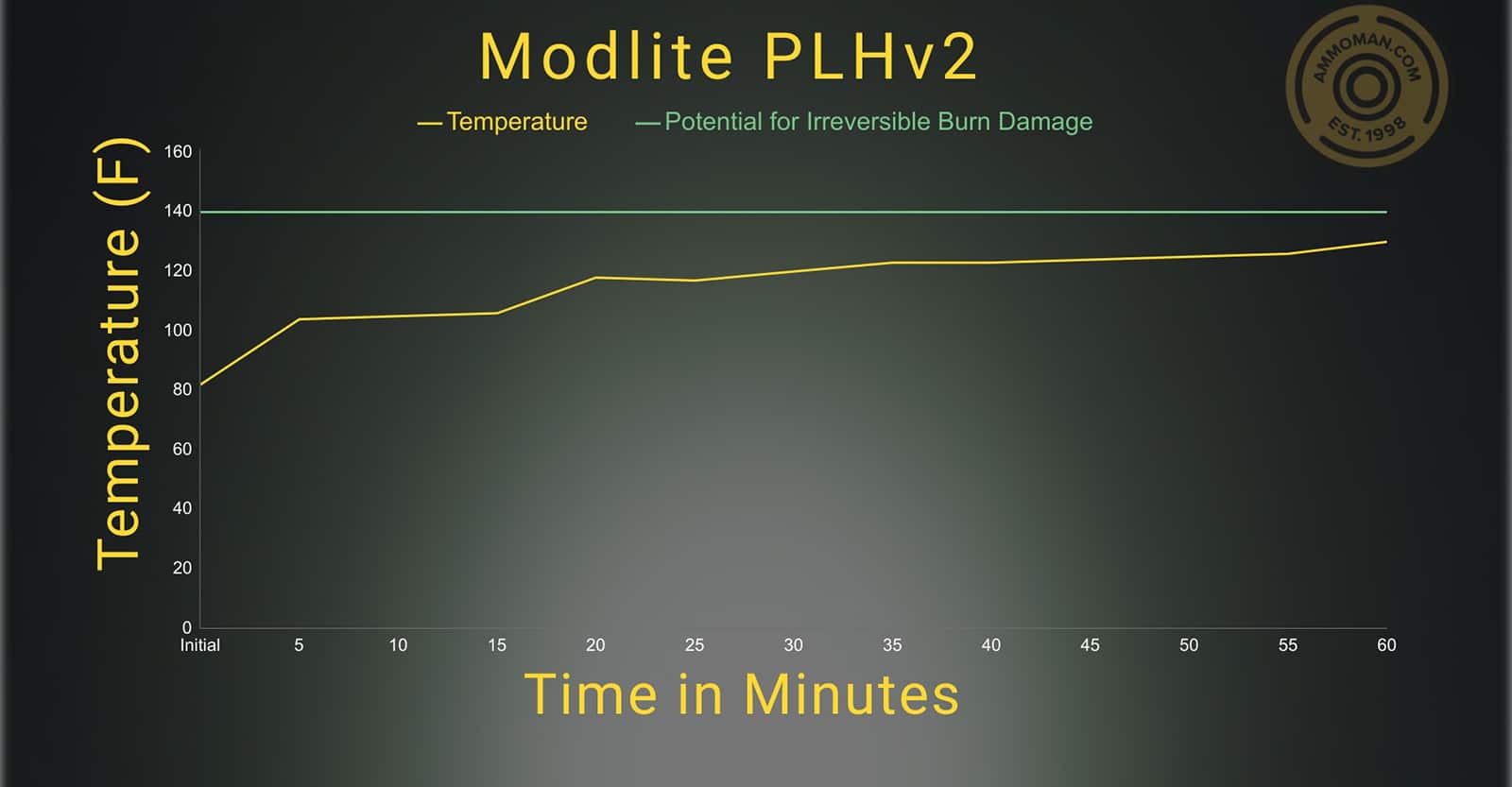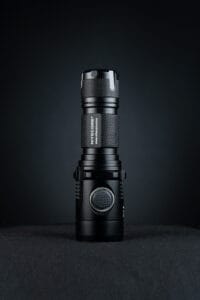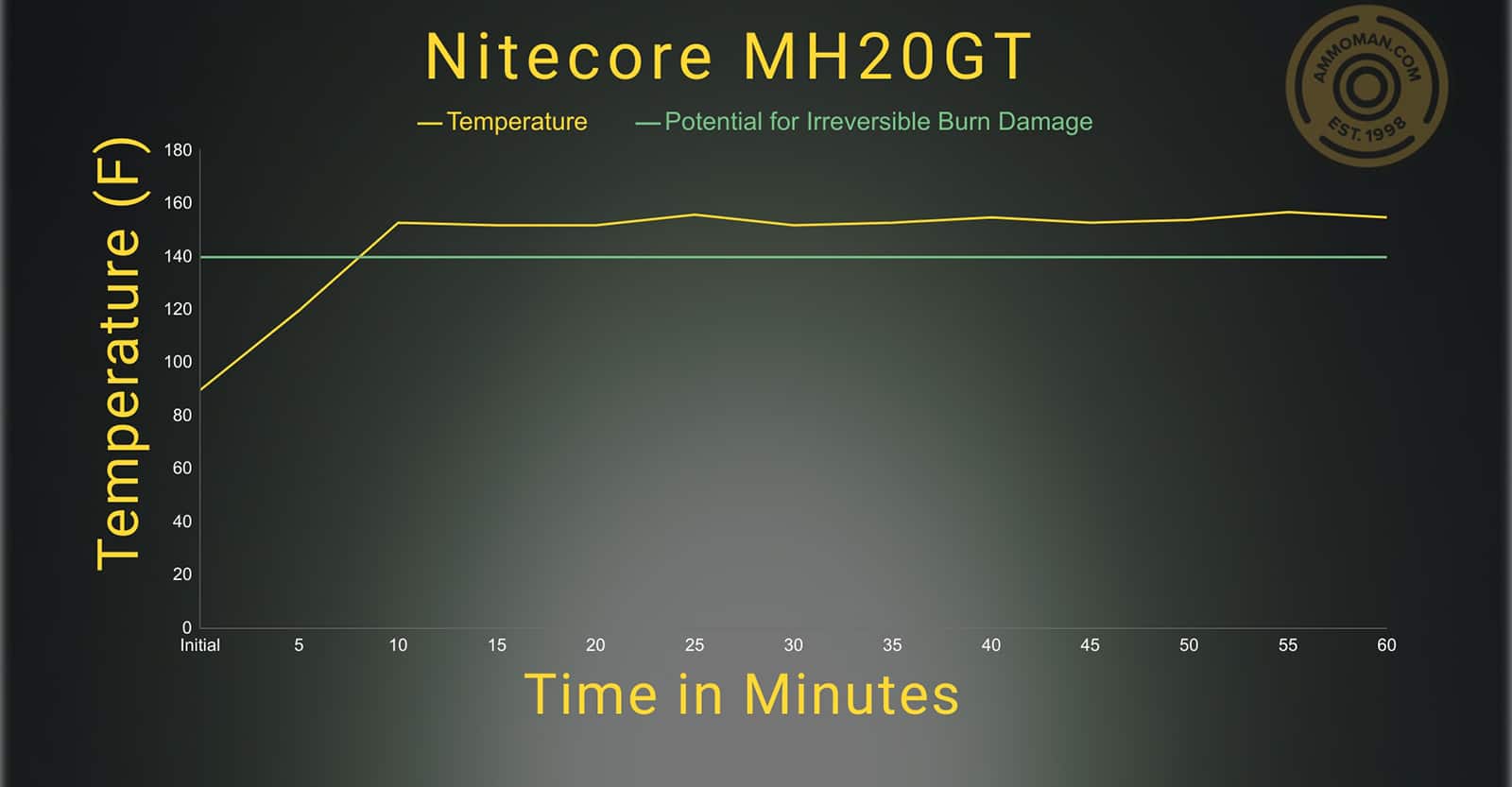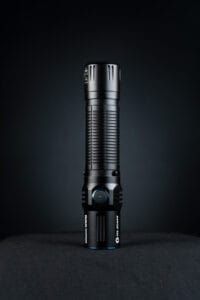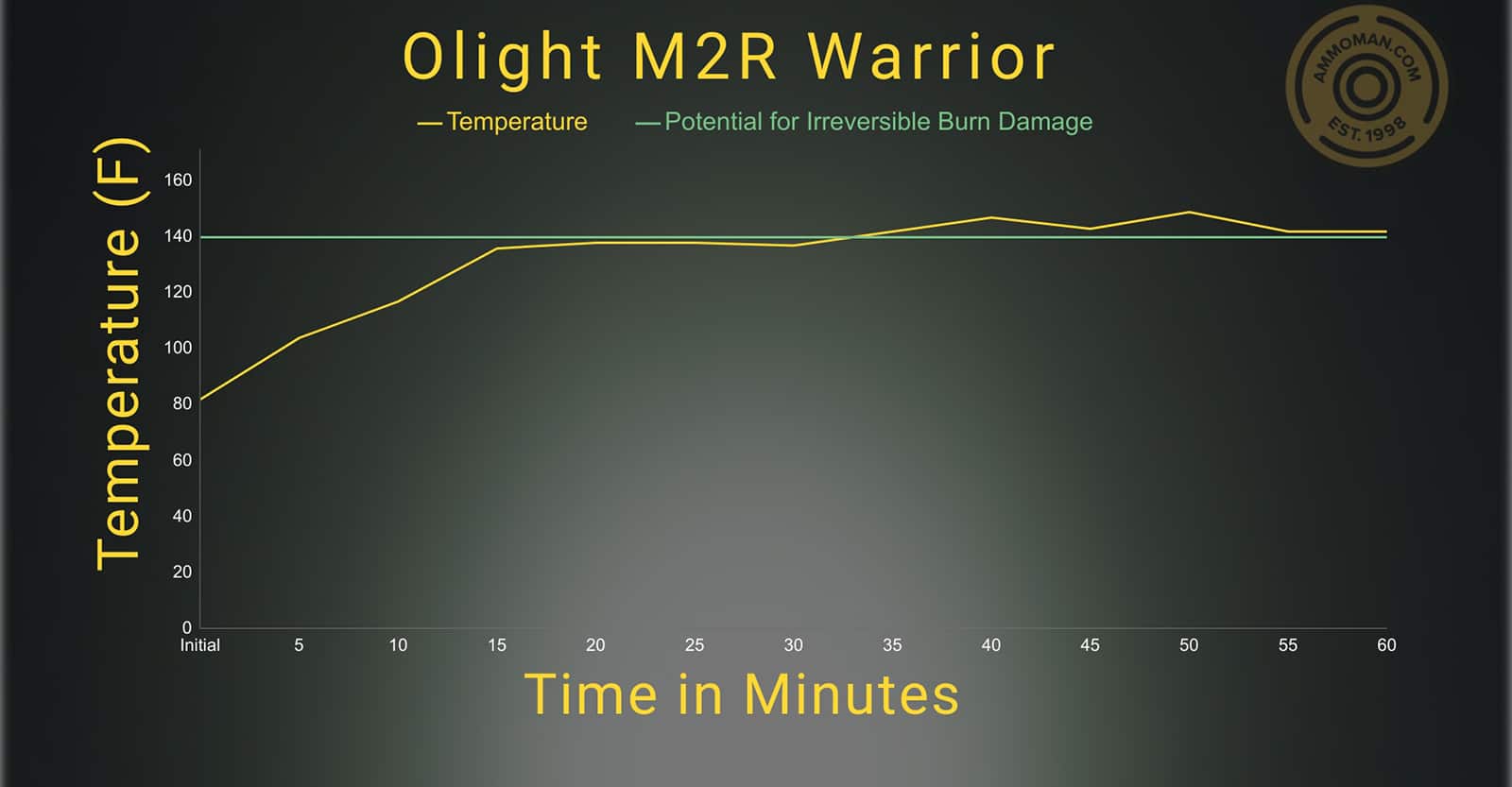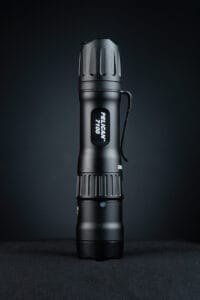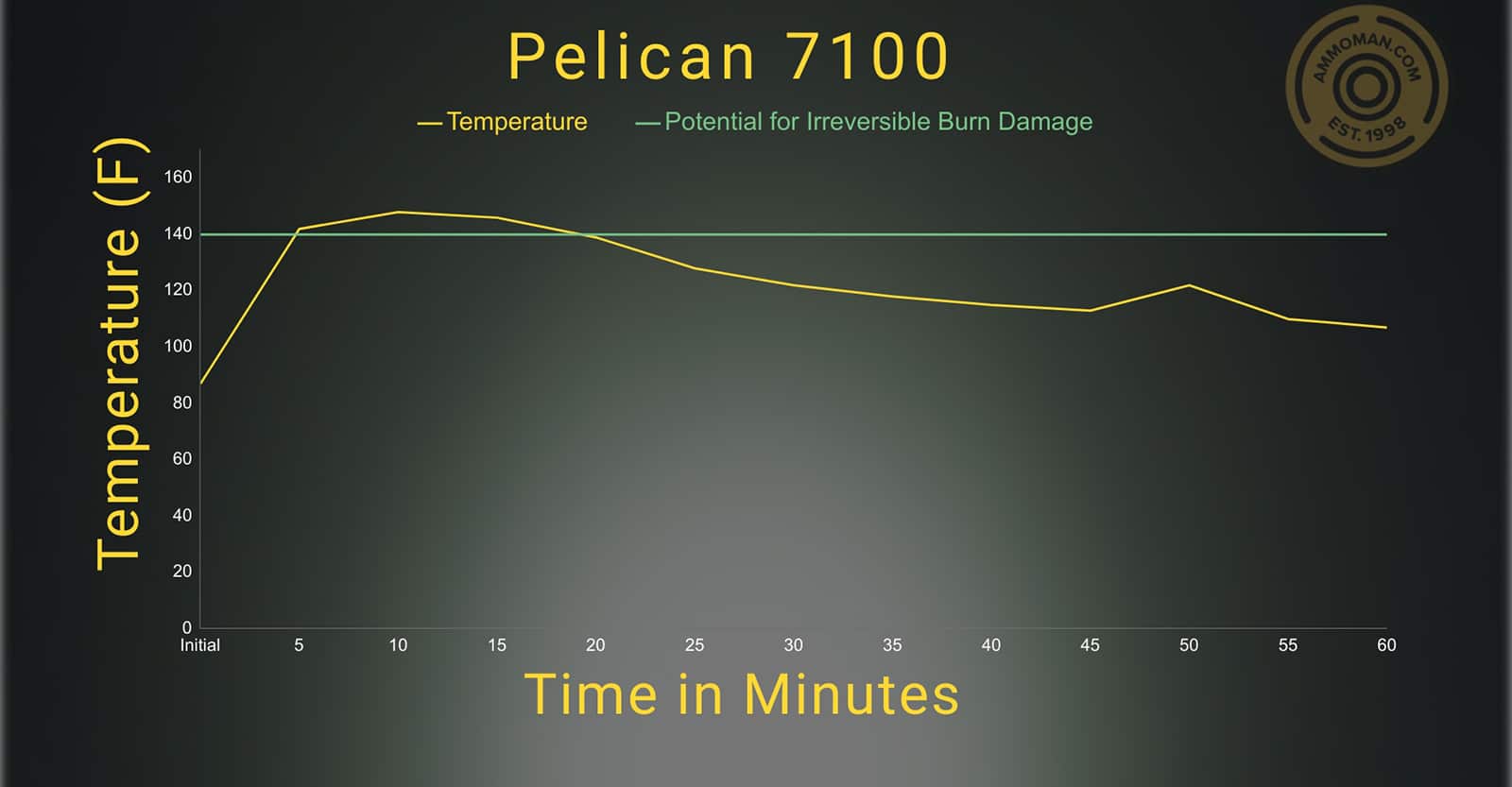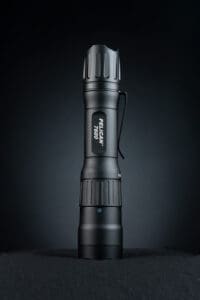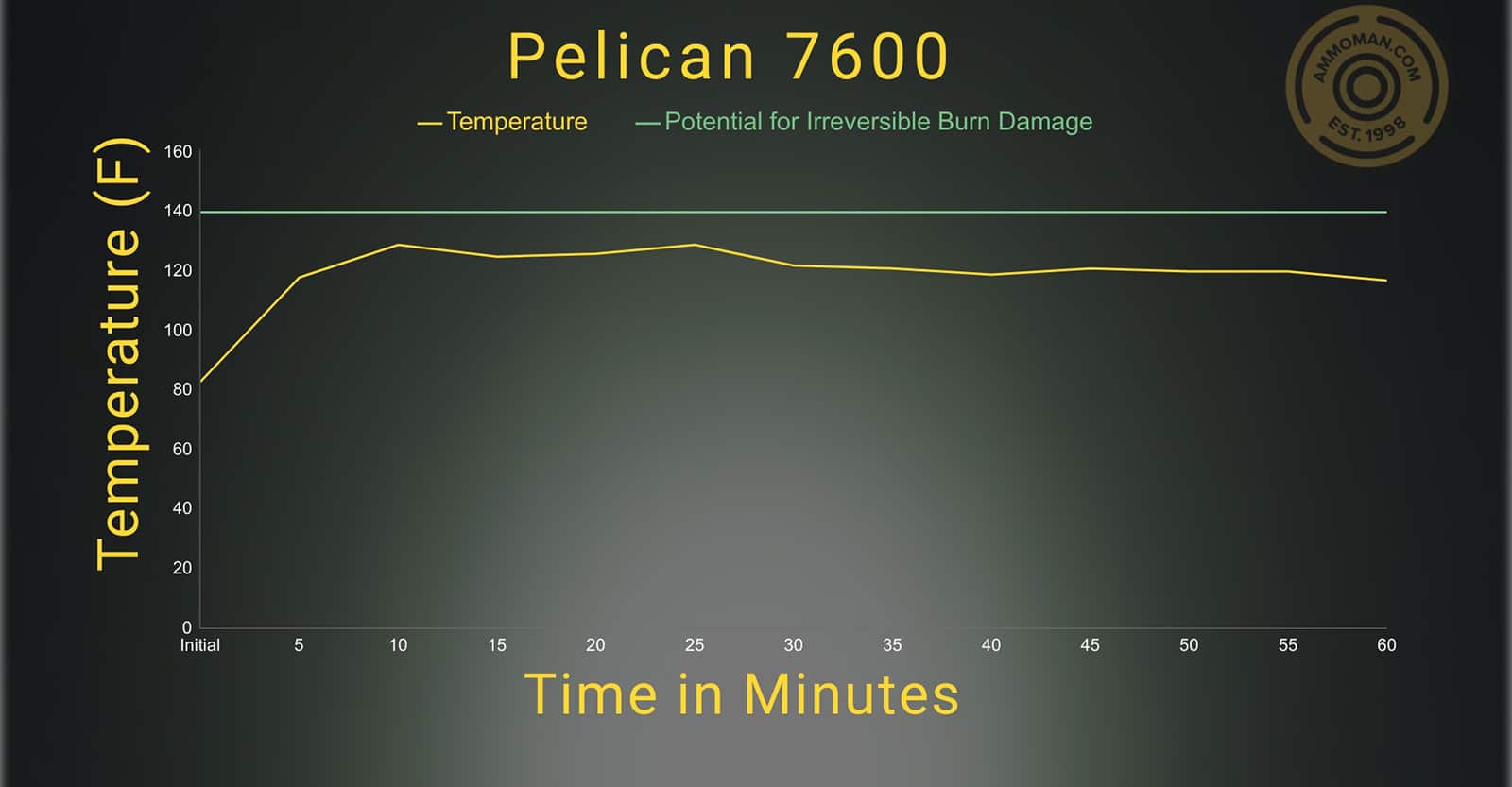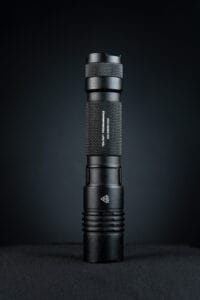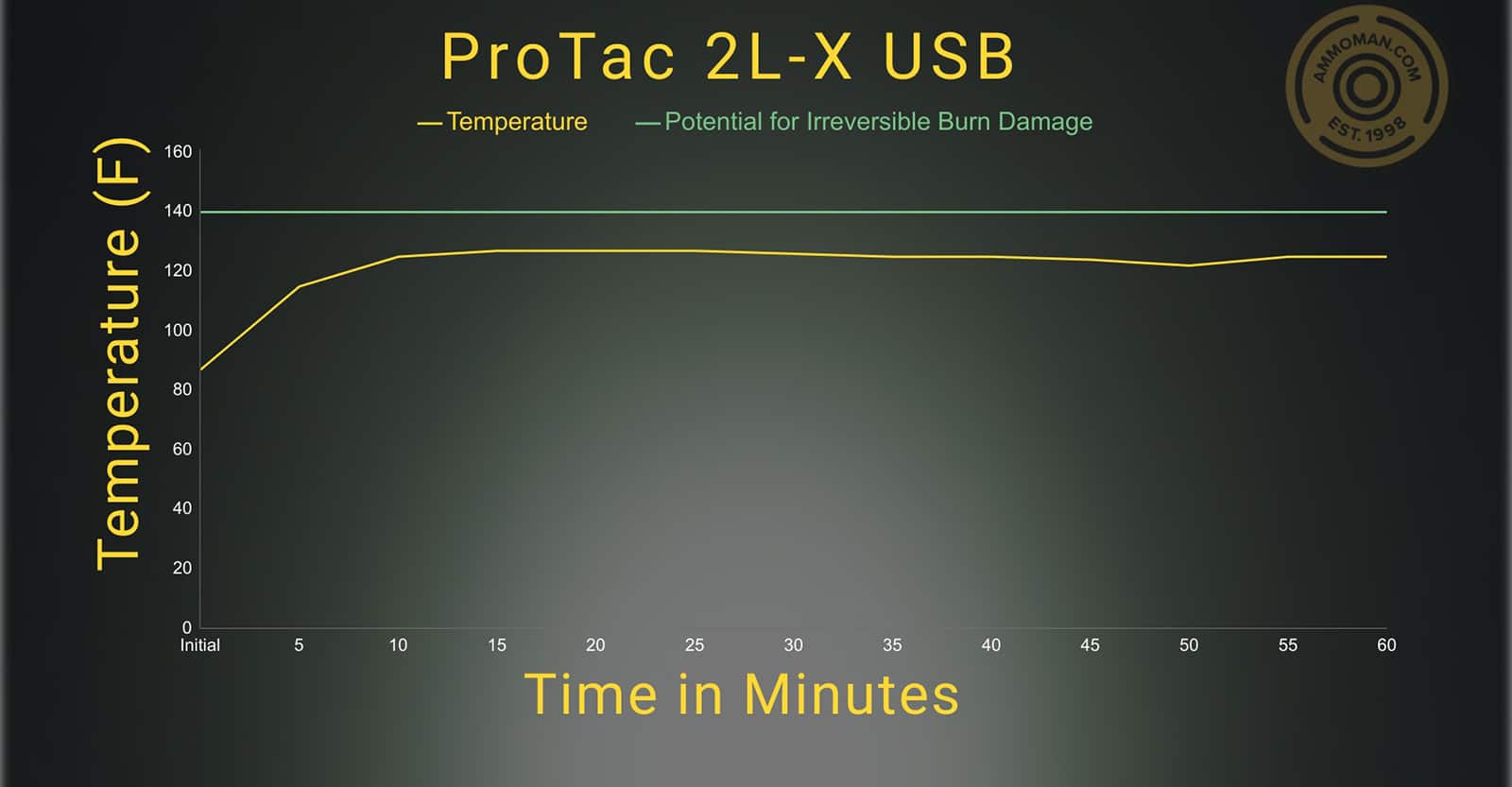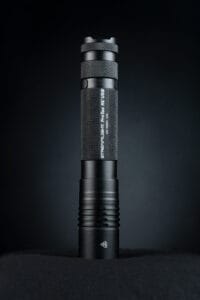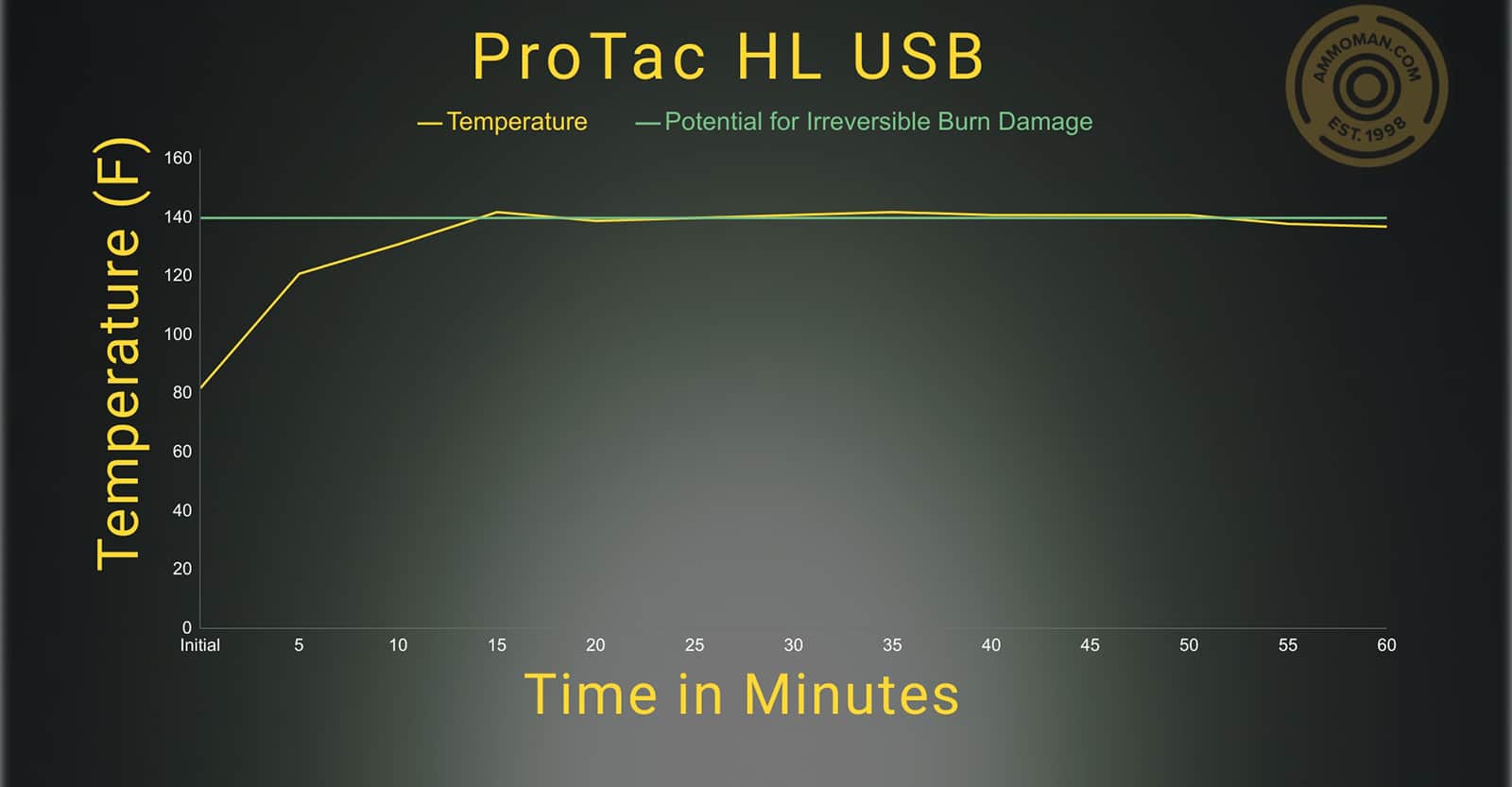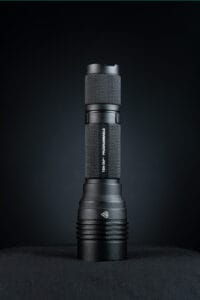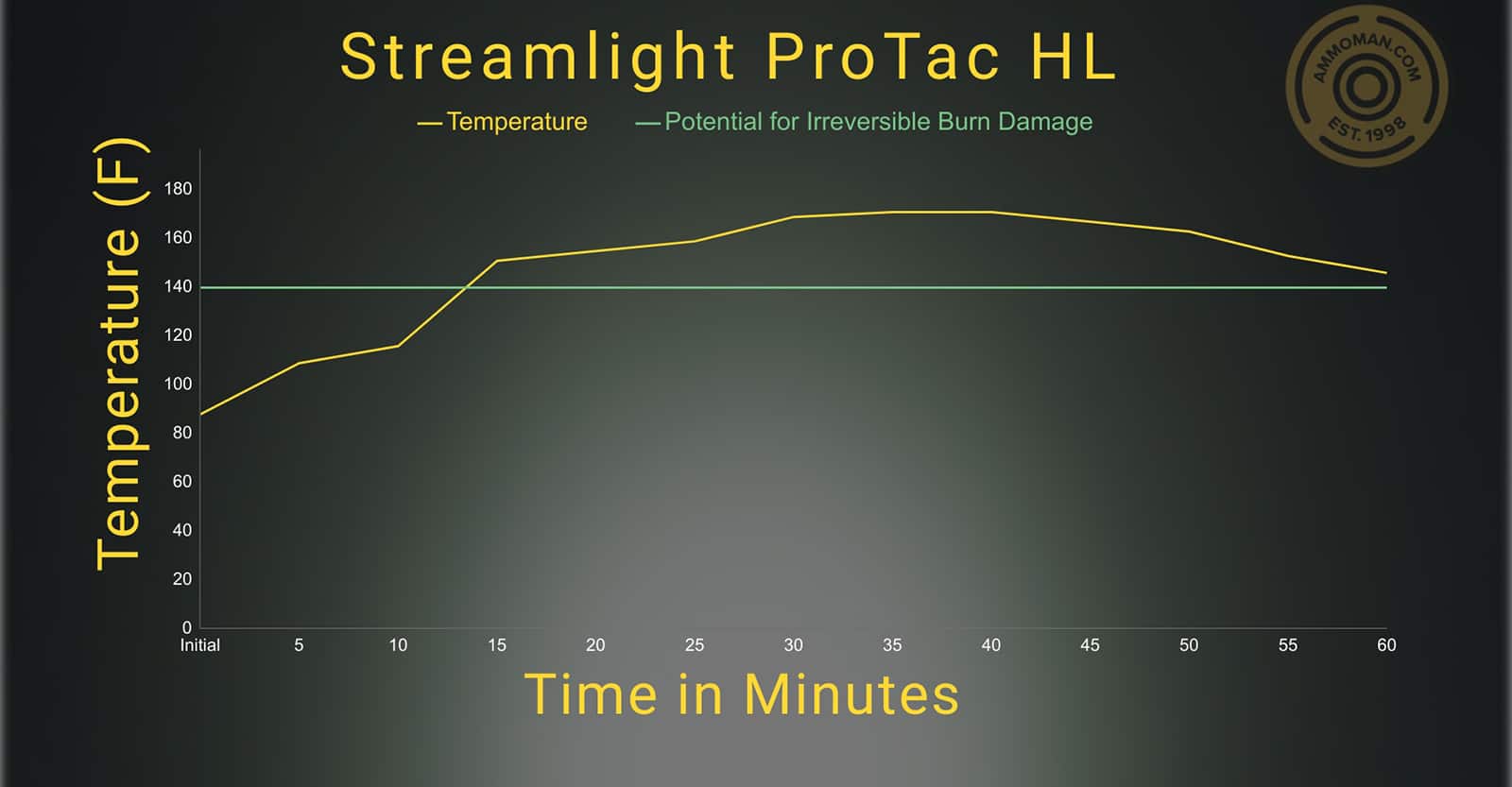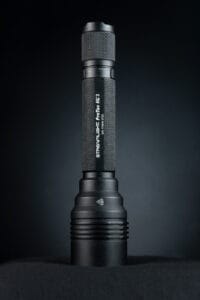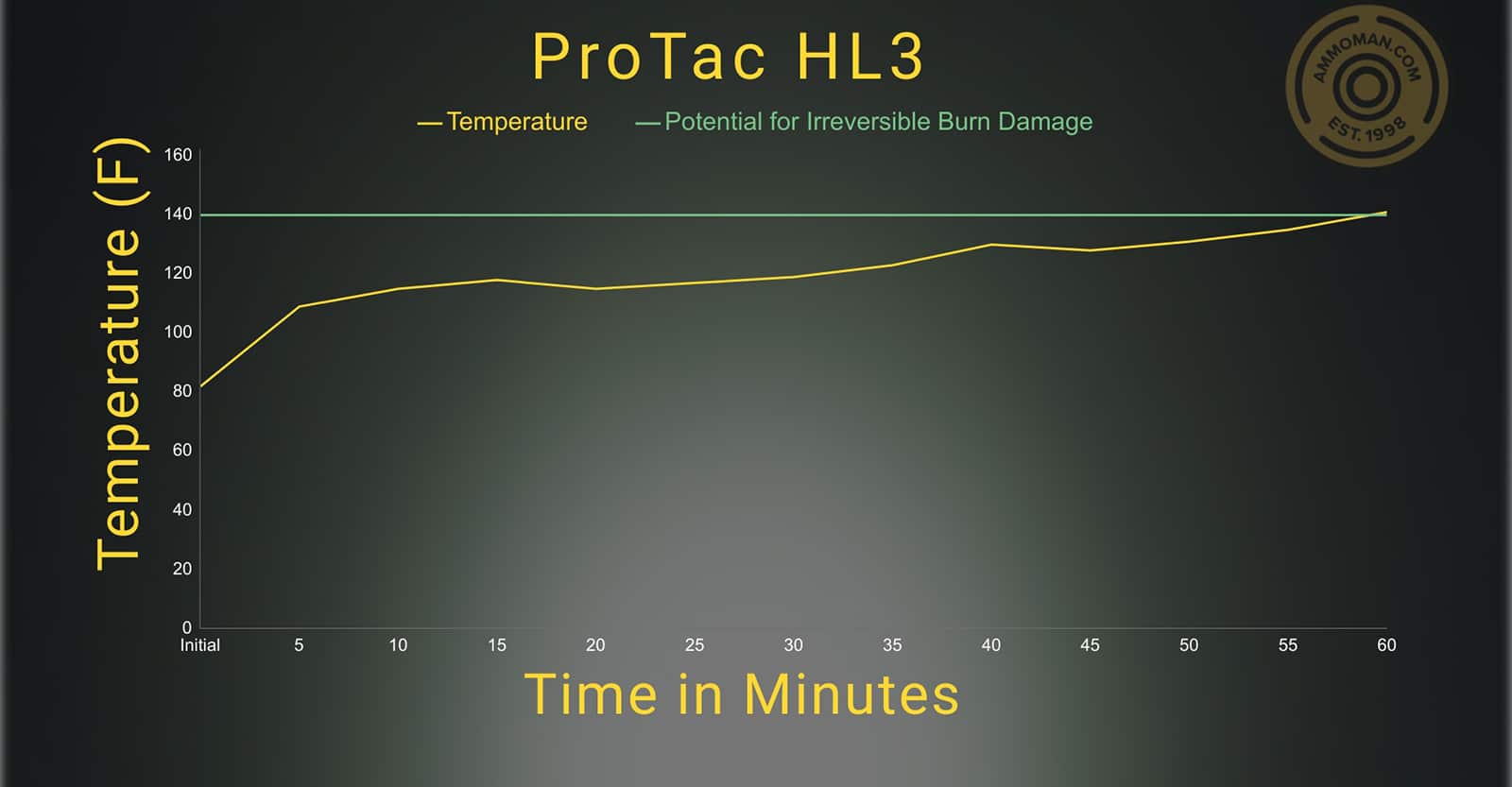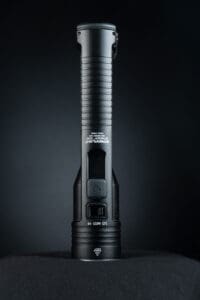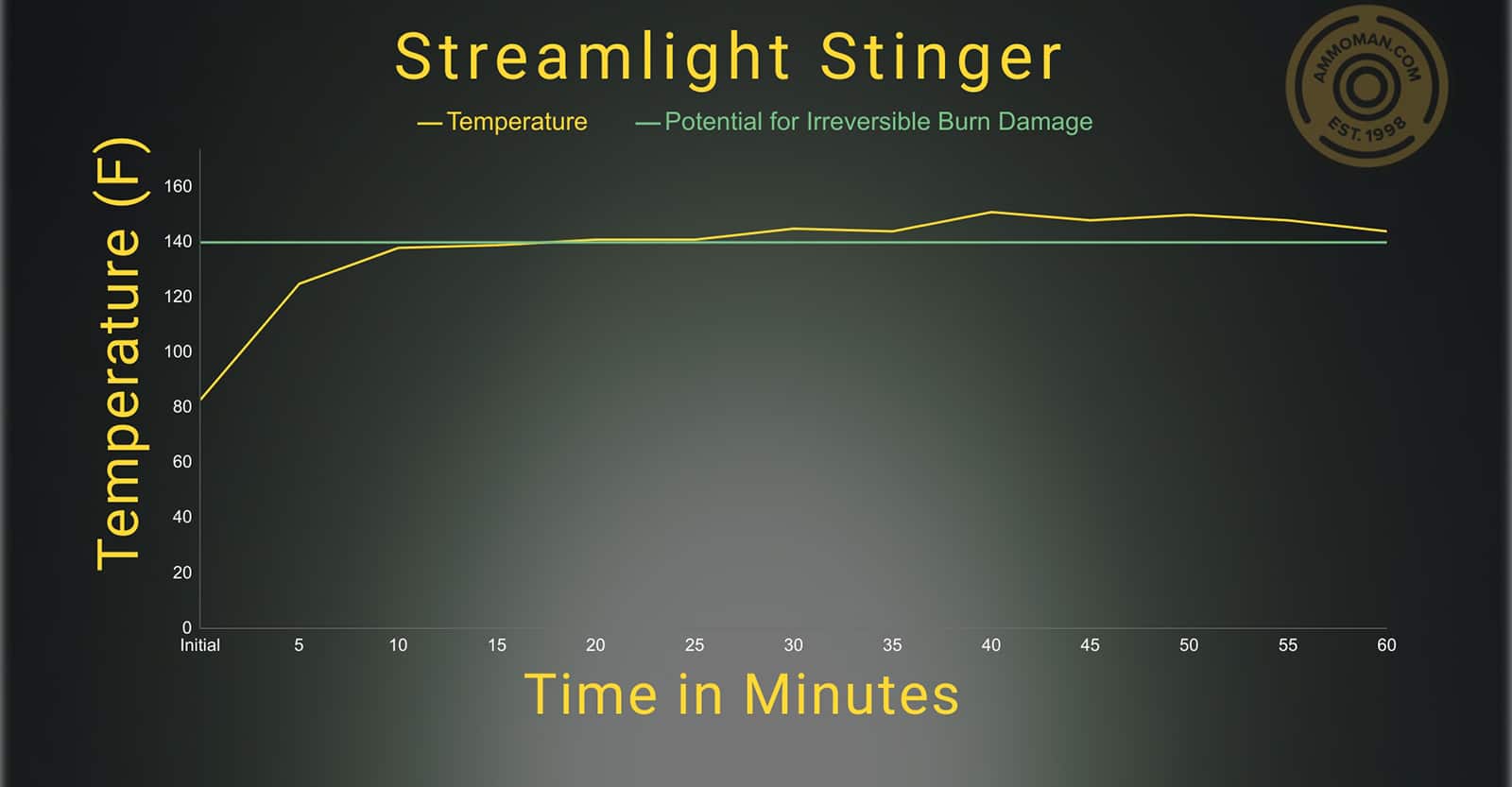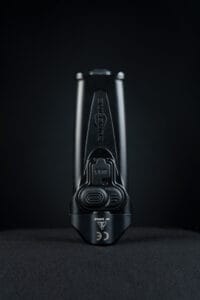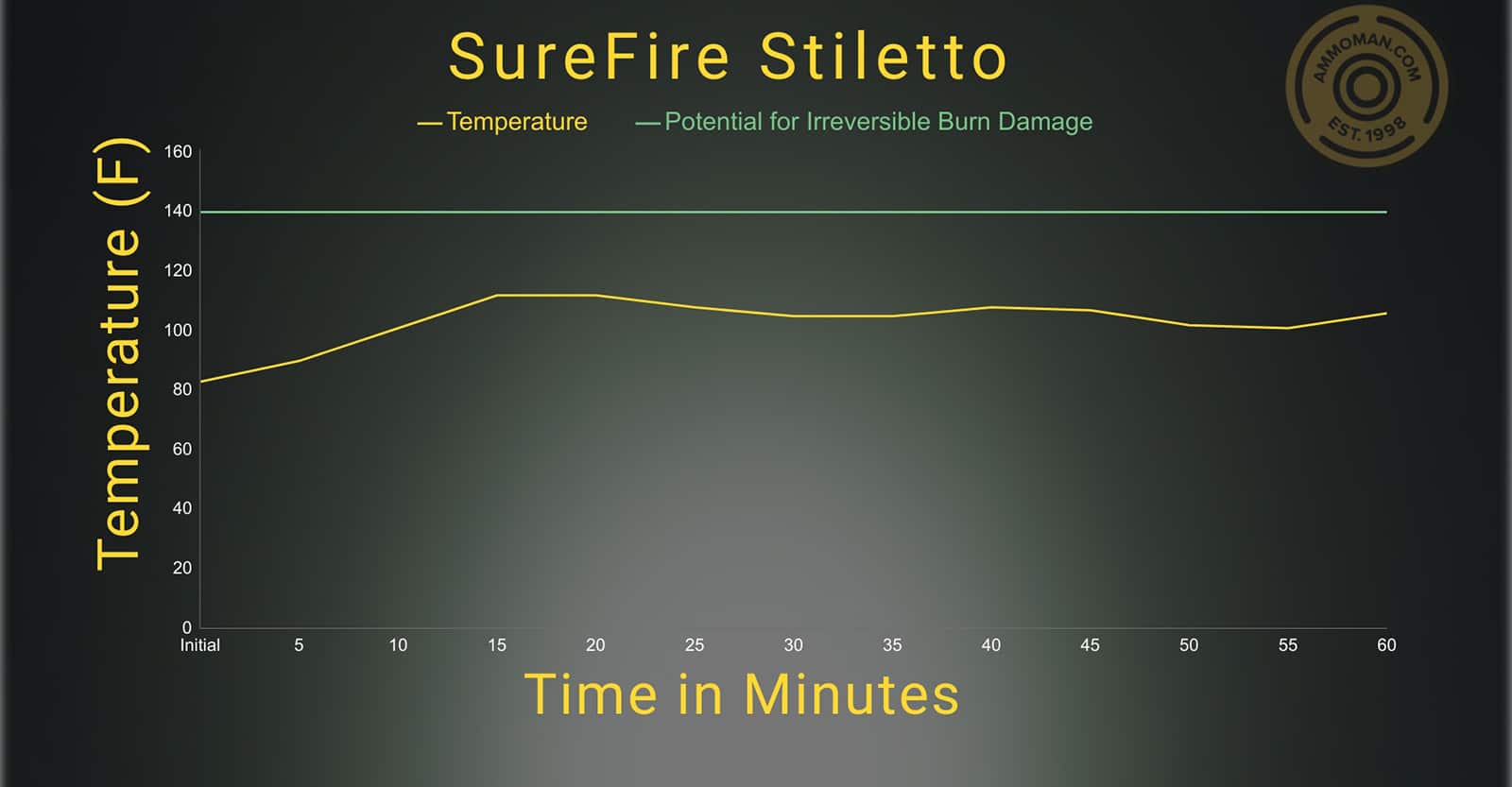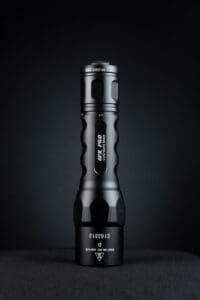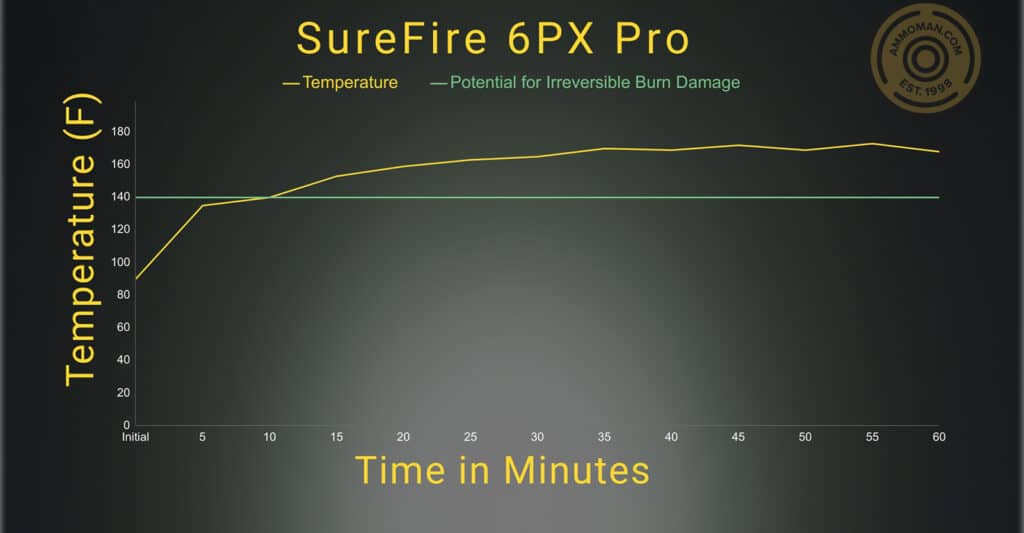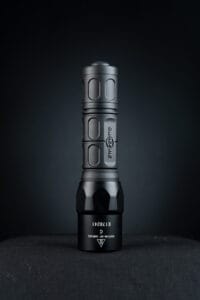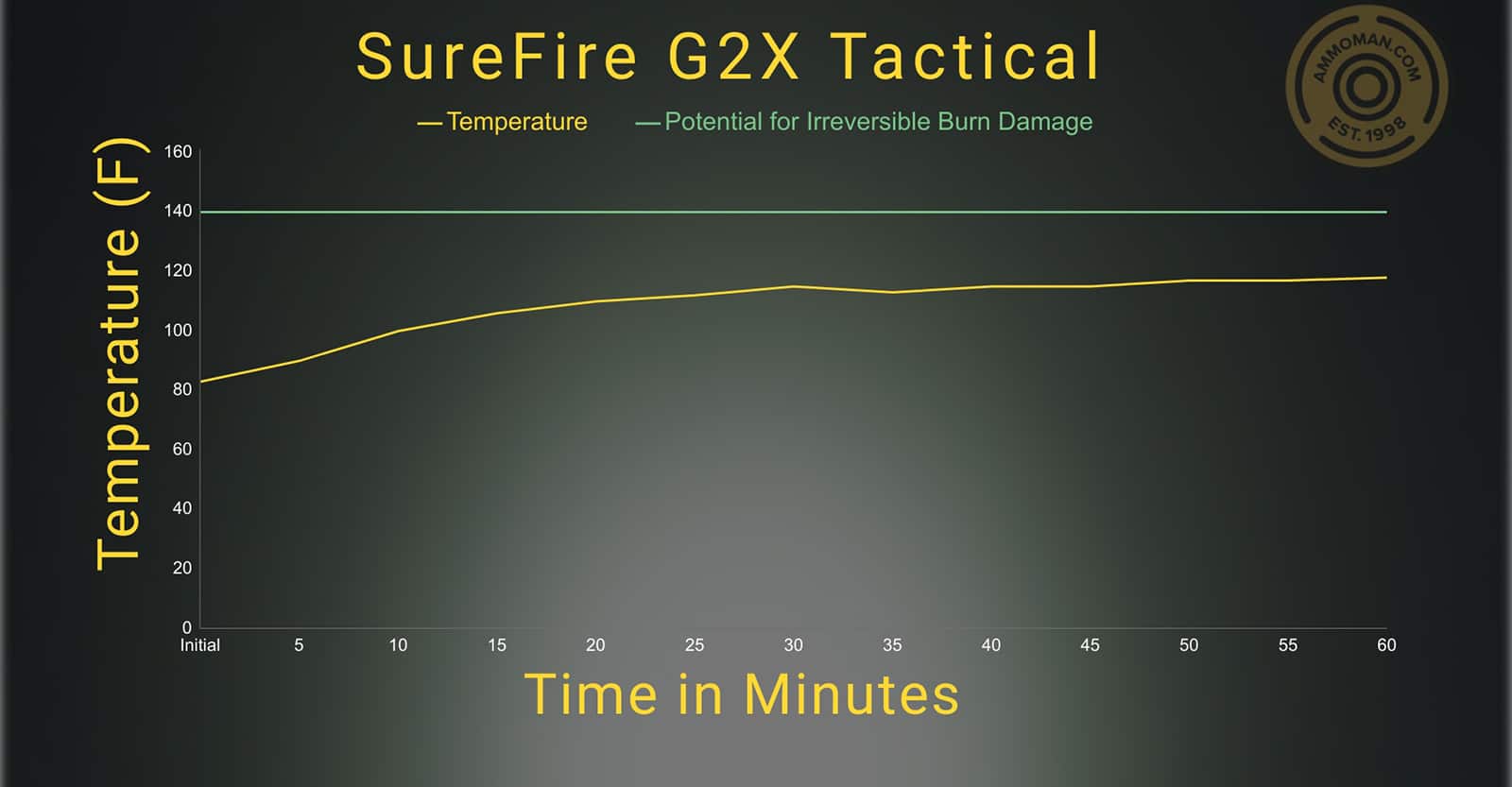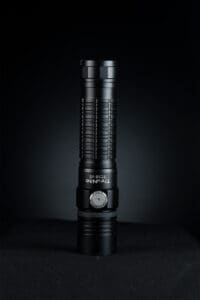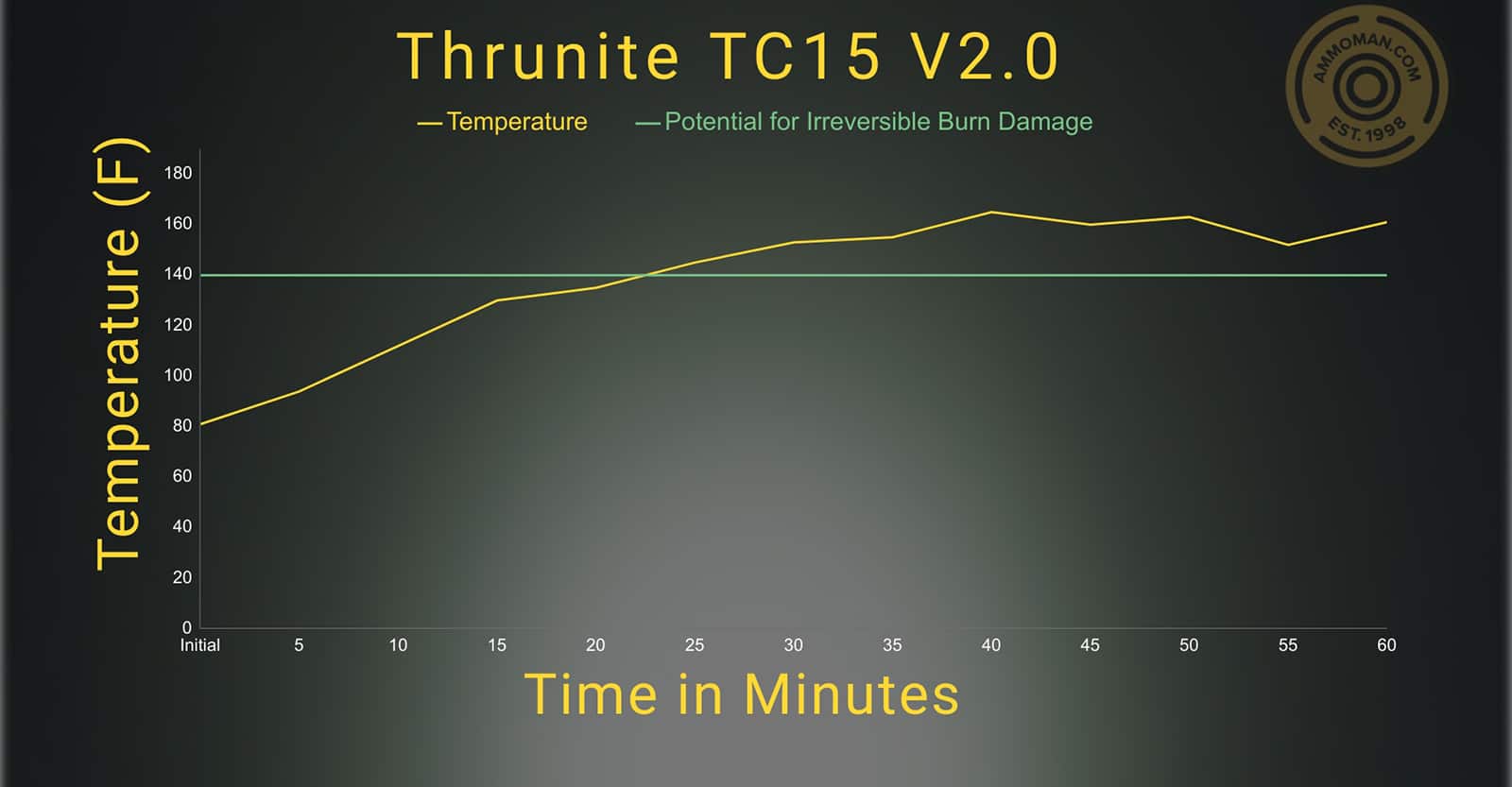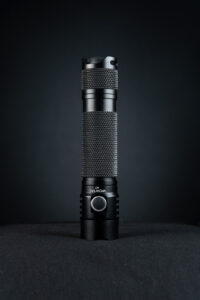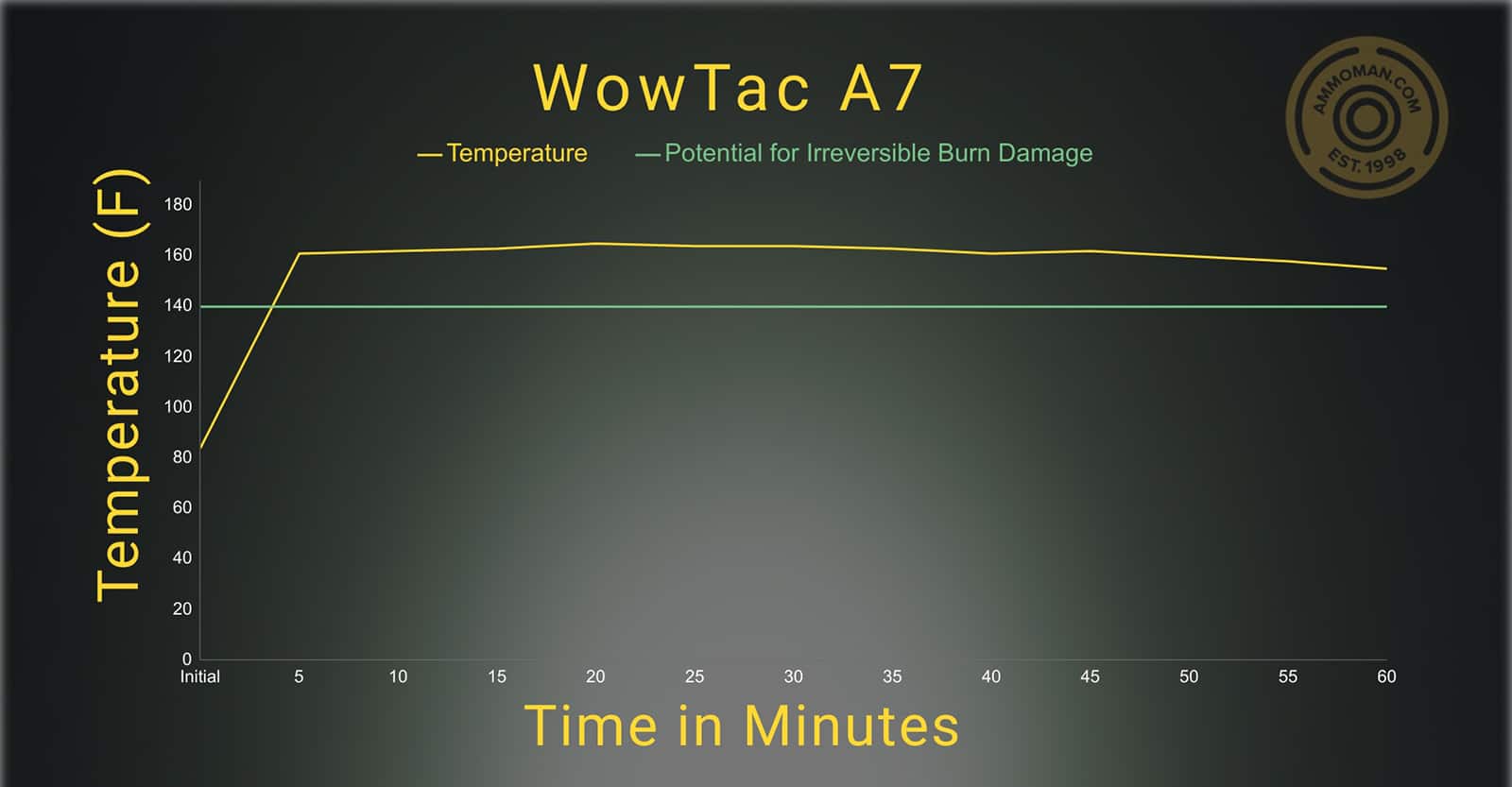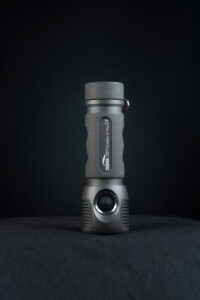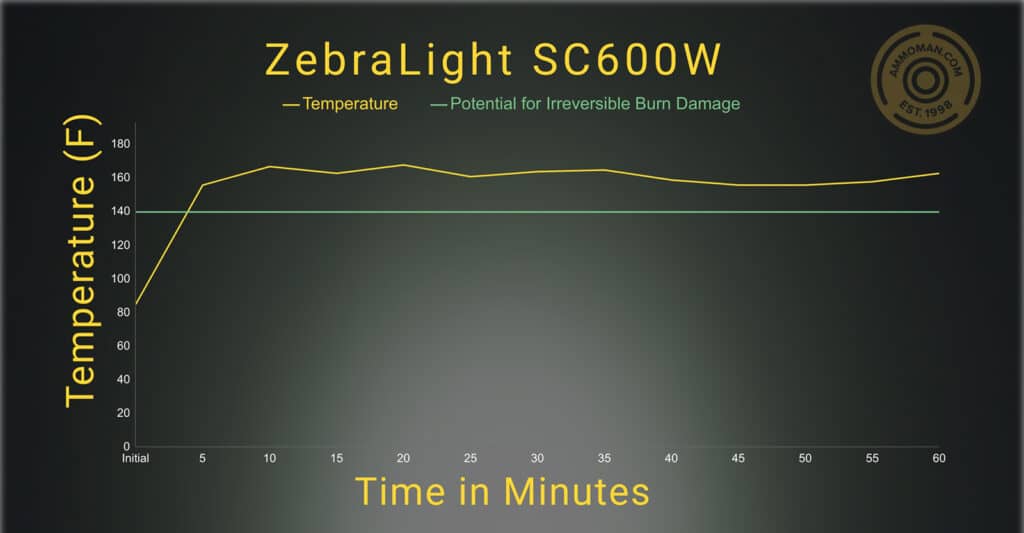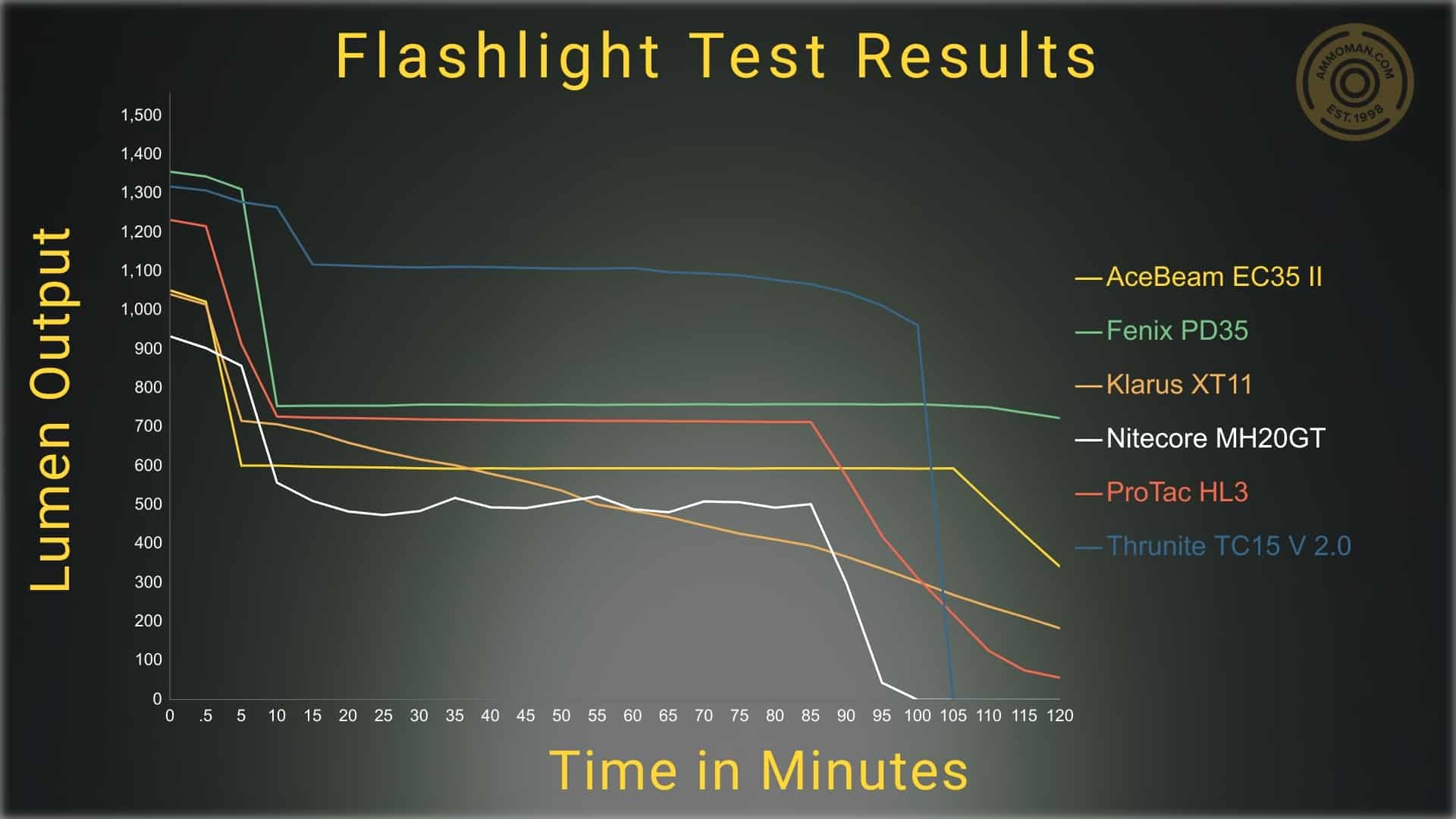The Best Tactical Flashlight – Test Data & Results
This tactical flashlight guide contains a ton of information. You can jump to specific sections, including our recommendations for the best tactical flashlight by clicking the links below.
Don’t care about the testing? Click here to see our picks for best tactical flashlight.
What Is A Tactical Flashlight?
Can Tactical Flashlights Actually Blind Someone?
Create Flashlight Testing Standards
Who Makes The Best Tactical Flashlight?
Testing Procedure
Test Results
Tactical flashlights are everywhere. We see them in the checkout lines of our local big box hardware store, or on the shelves of sporting goods shops across the nation. The airwaves are flooded with infomercials trying to sell us the latest and greatest in “military-strength” portable flashlights. However, it’s tough to find independent, head to head comparisons for these lights that use commonly accepted measurement standards. A flashlight may say it has 1200 lumens of power, but what does that mean? Does it actually have that much output? And are lumens actually a good way to evaluate the utility of a tactical flashlight?
There’s a lot of ground to cover here, so let’s get down to it and help determine the best tactical flashlight for you. Some of the links below may be affiliate links. This means there’s a chance we receive a small commission to help fund future flashlight tests for purchases made through them.
The Best Tactical Flashlight
Based on how you plan to use it, we recommend the following as the best tactical flashlights:
- For Value Minded Customers: Wowtac A7
- When small matters: ZebraLight SC600w IV Plus
- Law Enforcement Use: ModLite PLHv2-18650
- For Armed Citizens: Surefire Stiletto
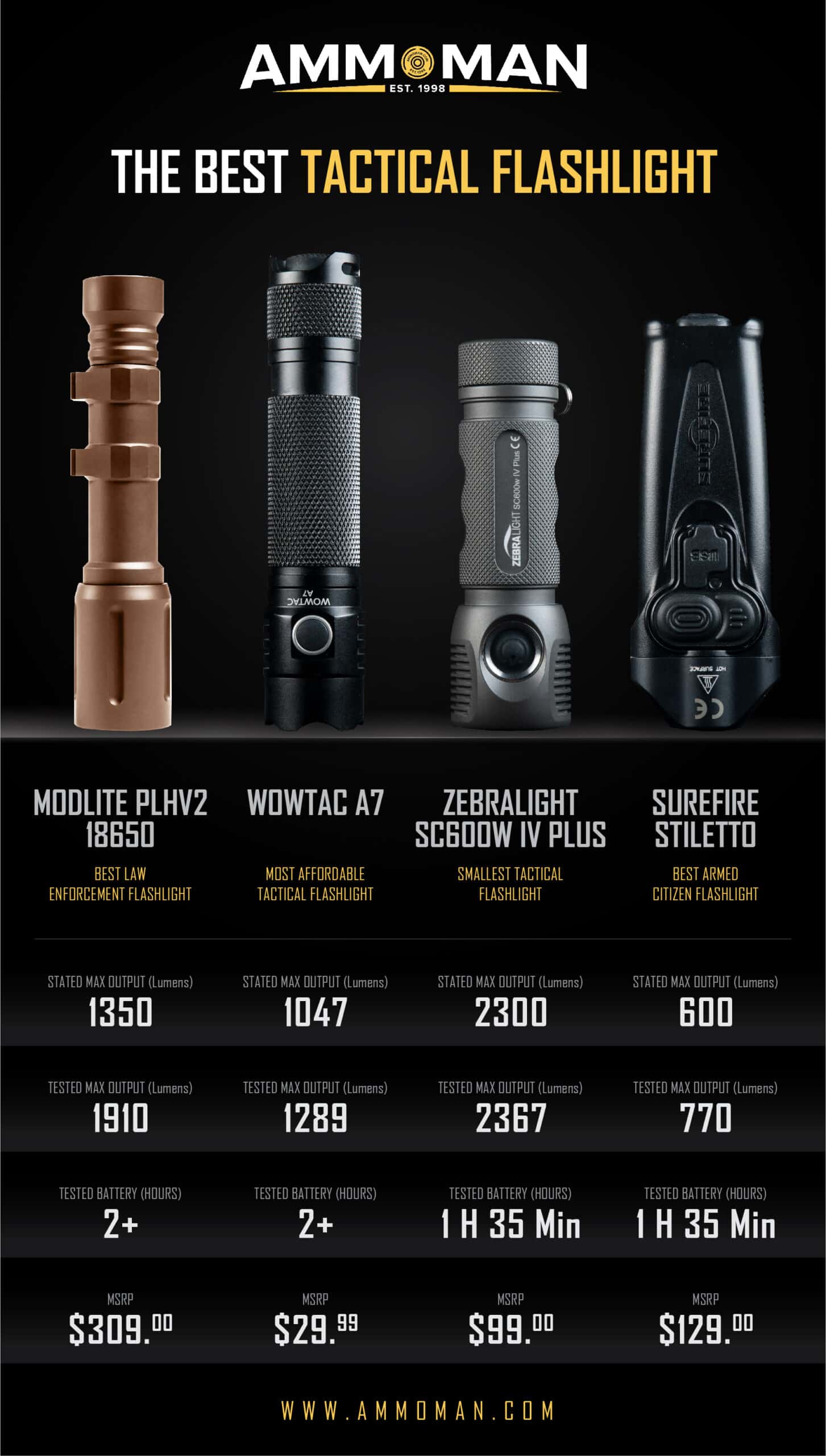
Based on our extensive testing of 20 flashlights, here are the 4 best tactical flashlights.
What Is A Tactical Flashlight?
A tactical flashlight is a light you’d use in a self-defense or life-and-death situation.
A tactical flashlight typically varies from a regular flashlight in four ways:
- Power source
- Ruggedized body
- Controls
- Brightness
Power Source
A tactical flashlight needs to serve a variety of functions. It needs to light up an environment in order to provide a clear understanding of the situation. It also needs to last for a long time between recharging or swapping out the batteries. You can’t depend on a light that only works for a few minutes in the field. Both of these requirements mean that a tactical flashlight needs a power source that is greater than what a typical alkaline battery can provide. As a result, tactical flashlights tend to be powered by either lithium-ion or lithium-polymer batteries, which pack more power than the batteries found in the checkout line at your local supermarket.
Ruggedized Body
Tactical flashlights also tend to be used outdoors, in any sort of weather and in all kinds of environments. They need to perform in extreme environments, and not fall apart if dropped. This means that most tactical flashlights are built from aircraft-grade aluminum, ruggedized polymers and other materials commonly associated with firearms manufacturing or the aerospace industry. This high level of durability means that a tactical flashlight should work in rough environments, or survive if dropped while you’re using it.
Controls
Another distinguishing feature of a tactical flashlight is different controls. I’m talking about things like a tail-mounted on/off switch or a combination of switches that control the power and the operation of the light. A tactical flashlight will often have several power modes that give varying amounts of illumination. This is especially useful when the light in your hand has to be bright enough to see trouble in the midst of a wide-open city street, without being so bright you get blinded as you search through a house.
Brightness
The amount of light that a tactical flashlight kicks out is usually far greater than a normal flashlight. This is due, in part, to the powerful batteries they use, and also due to the electronics which control their LED emitters. The total power of a light is expressed in lumens, and a typical tactical flashlight will kick out at least 300 of them.
But what does that actually mean?
Lumens are a way to keep track of the total amount of light a given flashlight can emit at any given time. A good analogy might be water running through a pipe. The bigger the pipe, the more lumens there are to be used.
Lumens, however, are just one way to express how a tactical flashlight emits light.
Candela is a measurement of beam intensity. If lumens are the amount of water running through the pipe, candela is the size of the nozzle that’s at the end of the pipe. Flashlights with lower candelas have wide beams with little or no hot spots. Flashlights with higher candela ratings focus their light in one spot. Which is best will depend on why you need a tactical flashlight. Wide beams allow for better use of your peripheral vision, but narrowly focused beams that can light up objects at greater distances and are well-suited for searching outdoors or lighting up your target in a defensive scenario.
Our Picks: The Best Tactical Flashlight
First, let’s understand that the job of an armed citizen varies greatly from the job of a law enforcement officer. An armed citizen doesn’t need to pursue suspects into dark alleys, and we don’t have to patrol the streets of our cities looking for bad guys. Rather, the job of an armed citizen is to avoid an encounter with a bad guy, but if we can’t, we need to use enough force to stop the threat. Because of this, a law enforcement officer will need different things from a tactical flashlight than an armed citizen will need.
There are two flashlights that stood out in our tests as being well-suited for law enforcement officers.
- Streamlight HL USB: With over two hours of run time along with a built-in USB port and a low running temperature, the HL USB is well-suited to rest inside a patrol cruiser until it’s needed. Top this off with a beam pattern that balances long distance throw and bright edges, and you have an excellent flashlight to back up the light on your duty belt.
- Modlite PLHv2-18650: Lots of lumens and lots and lots of candela make this light an obvious choice. Other features like a two hour runtime and modular body make it a very attractive choice for law enforcement use, and the fact that it stayed fairly cool throughout our test is just icing on the cake.
The armed citizen, however, needs a flashlight to perform a variety of tasks, and they don’t have the advantage of carrying their gear on a gun belt like a patrol officer does. Portability and flexibility are more important that lumens, because a flashlight that isn’t there when you need one isn’t really a useful tool.
- Surefire Stiletto: The Stiletto is an innovative re-imagining the tactical flashlight for everyday use. The light has a shape that is well-suited to pocket carry, and the polymer body of the light means it never gets excessively warm.
- Streamlight 2L-X: With a long runtime, USB rechargable battery, and beam pattern that’s well-suited to lighting up a room or working on a car at night, the 2L-X stands out as an excellent choice for average person on the street.
Now let’s break down how we came to those results.
How Much Light Do You Need?
Manufacturers tell us that their tactical flashlights can put out “blinding” levels of light. Internet lore tells us that a light must have at least 300 lumens in order to disrupt an attacker and prevent him from accomplishing his task. Chasing down the source of that 300 lumen legend proved to be a difficult task. So, we consulted with firearms trainer and author Andy Stanford to see what “blinding” actually means when it comes to handheld flashlights. Not only is he a first-class shooter and trainer, he has also worked as a consultant for Surefire and has helped them develop some of the lights in our test.
“The Surefire 6C came out in the late 80’s and was the first small light to use CR123A batteries,” Stanford said. “This meant it had ten times the output of the flashlights in use at the time. Now with lights like the 6PX Pro, we have lights that have over 10 times the output of the original 6C, and many lights go far beyond that level of light output. As a result, the term ‘blinding’ has evolved over the years as the output of flashlights has grown higher and higher.”
Are Tactical Flashlights Actually Blinding?
How much brightness is enough to disable a potential threat? Also, is there a point of diminishing returns? That is, can you “over-spend” on a tactical flashlight that delivers more power than actually matters?
We set out to create as much of a real world scenario as possible without putting anyone in real danger.
Our tests called for two different flashlights, the J5 Tactical V1 Pro, which has the internet-mandated minimum of 300 lumens, and the Klarus XT11. It has 1060 lumens and a much tighter beam than the J5 Tactical light.
We conducted the tests in a slightly dark household indoor lighting situation to test the lights in a simulated defensive environment. There were half-hour increments in between each test to give our eyes a chance to recover from being exposed to each light.
Enter the Tueller Drill
We incorporated a common shooting drill to test what “blinding” actually means when it comes to tactical flashlights.
The Tueller Drill is well-known as a way to help people understand just how quickly a determined attacker can close the distance and inflict harm on someone. Dennis Tueller is a Salt Lake City police officer who discovered that at 21 feet, a healthy, motivated attacker can close with his victim and inflict damage in about the same amount of time it takes to draw from a holster and fire a shot. In addition to this, at 21 feet, relying on body index is going to deliver sub-par results, and aimed fire is going to be essential for getting hits on the target.
We used a variant of the Tueller Drill to test what effect getting hit with the “blinding” light from a tactical flashlight might have on our accuracy. Aimed at a target set up 21 feet away, we fired three shots in two seconds with a laser training gun to establish a base of accuracy.
For the tests, a partner shined each light in our eyes for one second from twenty one feet away. Then, we shot three rounds from a laser training gun at a standard USPSA target positioned 21 feet away. Finally, we measured the group size to see how the flashlight affected our aim.
Test Results : Accuracy
Base accuracy indoors at night:
Three shots in two seconds at 21 feet
Group Size: 1.19 inches
300 lumen J5 Tactical V1 Pro indoors at night:
Three shots in two seconds at 21 feet
Group Size: 3.44 inches
1060 lumen Klarus XT11 indoors at night:
Three shots in two seconds at 21 feet
Group Size: 7.75 inches
As the light got brighter and more concentrated, it became harder and harder to get a good sight picture with the laser trainer pistol. In addition to this, the target itself was hard to see in the glare of the 1000+ lumen Klarus light.
As a result, the shots made when the 1000+ lumen Klarus were unsighted, using body index rather than sight alignment and sight picture. The brighter light did not prevent us from getting shots off towards the target, but it certainly affected our accuracy.
What About Other Eye Functions?
We also tested how getting hit by the light from a tactical flashlight might affect someone’s ability to perform simple tasks. To test this, we set up a standard eye chart 21 feet away.
Our subject started to read the chart and we recorded how much of the chart they can read in two seconds in the darkened household indoor lighting. Then, we shined the light in the subject’s eyes for one second, and recorded how much of the chart they can read after being exposed to each light.
Test Results: Task Completion
Baseline Test, reading as many letters as possible from a standard eye chart in 3 seconds at 21 feet
Results: EFPTOZLPE
J5 Tactical V1 Pro, reading as many letters as possible from a standard eye chart in 3 seconds at 21 feet
Results: EFPTOZL
Klarus XT11, reading as many letters as possible from a standard eye chart in 3 seconds at 21 feet
Results: N/A
Taking three seconds to read the first few letters of the chart from 21 feet away in a darkened indoor room was not a challenge. The task became more difficult once the 300 lumen J5 Tactical light was shone in our eyes.
It then became impossible once the 1060 lumen Klarus tactical flashlight was blasted in our face. Not only could we not read the chart, we couldn’t even see the chart itself, making it impossible to read any of the letters.
As we can see, the more lumens and candela, the more effect your light is going to have on your target. Was the Klarus a blinding light that physically stopped us in our tracks? No. Did it seriously affect our aim and prevent us from accomplishing a simple task? Very much so.
Creating A Set Of Standards For Tactical Flashlights
We mentioned the stated output of each light in that previous test, but how are those outputs measured? Is there a standard way of measuring things like lumen output or peak intensity of light source?
Turns out there is. The American National Standards Institute created the ANSI FL1 standard as an “apples to apples” way for manufacturers to set measurable standards of flashlight performance. The standard is voluntary, and includes testing such features as:
Light Output
This is the total lumens of output, as measured in an integrating sphere after the light has been on for at least 30 seconds. 30 seconds gives a sufficient time for the LED emitter inside the modern tactical flashlight to get hot and for the battery voltage to drop slightly. This short wait time usually results in a lower output number that is more in-line with the “real world” performance of light as it is used in the field.
Runtime
The amount of continuous runtime (in minutes) until the light output drops to 10% of its original value, as measured 30 seconds after turning the light on.
Peak Beam Intensity
This is the light intensity in candela (cd) at the brightest part of the beam. A lux reading is taken in the brightest portion of the beam at a measured distance with the light on its brightest mode and tightest focus at some time between 30 and 120 seconds of turning the light on. The lux reading is then converted to candela, and that is used to measure peak beam intensity.
Water / Dust Resistance
We’ll dive deeper into what these standards actually mean in another article, but to sum up, an IPX4 rating means the light is “water resistant” and can be splashed from all directions without water getting inside the light. A light that is IPX7 rated is considered to be “waterproof” The light can be submerged in 1 meter of water for at least 30 minutes. An IPX8 rating means the light is “submersible” and can survive being in water for 4 hours at a depth greater than 1 meter. Water can leak into the light during an IPX rating test, but it can’t leak into areas with electronics or batteries. The light must still operate when removed from the water and then is tested again for operation 30 minutes after being removed.
Drop Testing
This is the height (in meters) from which the light (with the batteries installed) can be dropped onto concrete without cracking or breaking and still function. Each sample light is dropped six times with different faces towards the ground for ratings over 1 meter.
As we said before, the FL1 standard is a voluntary standard. This means that manufacturers are free to use this test to describe what their lights can do, or they can make up their own tests and possibly get different results. Finding a truly level playing field where tactical flashlights of different makes and models has been almost impossible.
Until today, that is. Because today, we are rolling out the results of our first tactical flashlight review.
Testing Procedure
We chose 20 different tactical flashlights and will be testing them in the same way to see how they compare against each other. The flashlights will be tested using the batteries that they came with, and if no battery came with the flashlight, we will use an Empower 3500mah 18650 battery. In addition to this, we’ll recharge the batteries in between tests using a NiteCore Digicharger D2 charging station.
We performed the following tests:
Total Output
How does the stated amount of light from each flashlight compare to the actual amount of light it puts out? We’ll use an industry-standard integrating sphere from StellarNet for this test and record the results using their SpectraWiz software. The output from each light will be recorded and measured after 30 seconds of operation on the highest setting of each flashlight, which is consistent with the FL-1 standard.
Output Over Time
Does the drain on the battery affect the amount of light each flashlight puts out, and if so, by how much? We’ll measure the output of each light at five minute intervals over the course of two hours and record any changes.
Temperature
While this is not part of the FL1 standard, it is part of how the user interacts with the flashlight as it operates. The temperature of each light will be measured with a Fluke IR Thermometer, either right in front of the body-mounted switch (if present) or at the point where the head of the flashlight merges into the main body of the light. We’ll measure the initial temperature of each light, and record the temperature at five minutes over the course of an hour.
Peak Beam Intensity
This will be measured by measuring the lux of each flashlight at the center of each beam at a distance of 14 feet. Each measurement will then be converted to candela and recorded. The test will be conducted after 30 seconds of operation in accordance with FL1 testing.
Beam Pattern
A photo of the beam size and shape will be taken using the same 14 foot distance that was used for Peak Beam Intensity. The exposure for each photo will be 1/30 at f4.5 at ISO400, or about 1/128th the amount of light on a clear, sunny day.
Water/Dust Resistance
When it comes to water and dust resistance, the flashlights we are testing break down into three groups. Two of the lights are IPX4 rated, meaning they can be splashed with water with no ill effects. Six are IPX7 rated, and we will test those by immersing them in one meter of water for 30 minutes. The other 13 are IPX8 rated, and we will test those in two meters of water for 30 minutes. Each of these tests are functionally identical to the testing for the FL1 standard.
Drop Test
In order to mimic typical working conditions, each light will be turned on and then dropped on the bezel from a height of two meters. Any interruption or breakages from this drop will be recorded in our testing.
Tactical Flashlight Comparison Chart
Flashlight Test Results
These flashlights represent a sampling of what’s available today. The lights vary from inexpensive pocket flashlights powered by AA batteries to heavy duty, wall-mounted rechargeable units.
AceBeam EC35 II
Length: 5.5 inches
Width / Max. Diameter: 1.1 inches
Height / Min. Diameter: 0.84 inches
Bezel Diameter: 0.73 inches
Weight w/Battery: 4.59 ounces
Has Clip: Yes
USB Rechargeable: Yes
Includes Battery: No
Battery Type(s): 18650
Material: Aluminum
Modes: Turbo/Hi/Med/Lo/X Low/Strobe
Stated Max Output: 1100 lumens
Tested Max Output: 1023 lumens
Peak Beam Intensity: 5407 candela
Max Heat Output: 150 degrees
Stated Battery Duration: 2.15 Hours
Tested Battery Duration: 2+ hours
Waterproof: IPX8
Passed Water Test: No
Passed Dropped Test: Yes
MSRP: $70.00
EC35 Analysis
AceBeam’s EC35 II has a tail-mounted switch for on and off operation and a body mounted switch that controls the output of the beam and also works as an on/off switch. There is also a tail-mounted switch for instant on/off use at the last power setting. There is a USB-C socket opposite the switch that allows you to recharge the light from a wall recharger or similar.
The EC35 II tested slightly under its stated output of 1100 lumens. Water seeped into the light via the USB plug during our immersion testing, with visible water residue around the USB socket the next day. The tail switch still worked after the water test, but the body mounted switch was non-functional after the water test.
Fenix PD 35 Tac
Length: 5.4 Inches
Width / Max. Diameter:1.06 Inches
Height / Min. Diameter: 0.88 Inches
Bezel Diameter: 0.83 Inches
Weight w/Battery: 4.69 ounces
Has Clip: Yes
USB Rechargeable: No
Includes Battery: No
Battery Type(s): 18650
Material: Aluminum
Modes: Turbo/Hi/Med/Lo/X Low/Strobe
Stated Max Output: 1000 lumens
Tested Max Output: 1345 lumens
Peak Beam Intensity: 7924 candelas
Max Heat Output: 140 degrees
Stated Battery Duration: 1.1 Hours
Tested Battery Duration: 2+ Hours
Waterproof: IPX8
Passed Water Test: Yes
Passed Dropped Test: Yes
MSRP: $75.00
PD35 Tac Analysis
The Fenix PD35 Tac has a tail-mounted switch for instant activation and a body-mounted switch for changing output modes. There is no provision for charging the battery without removing it from the flashlight, and no battery is included with the light. The PD35 met or exceeded its stated performance levels, but had a heat level that made it painful (and possibly dangerous) to hold for extended periods of time.
J5 Tactical V1 Pro
Length: 3.7 inches
Width / Max. Diameter: 1.17 inches
Height / Min. Diameter: 0.78 inches
Bezel Diameter: 0.87 inches
Weight w/Battery: 4.48 ounces
Has Clip: Yes
USB Rechargeable: No
Includes Battery: No
Battery Type(s): AA/14500
Material: Aluminum
Modes: High / Low / Strobe
Stated Max Output: 300 lumens
Tested Max Output: 375 lumens
Peak Beam Intensity: 224 candela
Max Heat Output: 140 degrees
Stated Battery Duration: 1 hour
Tested Battery Duration: 50 minutes
Waterproof: IPX4
Passed Water Test: Yes
Passed Dropped Test: Yes
MSRP: $29.95
J5 Analysis
With its budget price, small size and AA battery source, the J5 Tactical V1 Pro is a good example of the “tactical” lights you might find in a big-box retail store. Unlike the other flashlights in our test, the reflector on the XT11 is a focusing spotlight. This means you can change the beam size from very wide to a narrow, tiny spot. For our purposes, we tested the flashlight as it came out of the box, at its widest setting.
Klarus XT11
Length: 5.87 inches
Width / Max. Diameter: 1.37 inches
Height / Min. Diameter: 0.86 inches
Bezel Diameter: 1 inch
Weight w/Battery: 6.36 ounces
Has Clip:Yes
USB Rechargeable: No
Includes Battery: Yes
Battery Type(s): 18650
Material: Aluminum
Modes: Hi / Med / Low / Strobe
Stated Max Output: 1060 lumens
Tested Max Output: 1016 lumens
Peak Beam Intensity: 12604 candela
Max Heat Output: 124 degrees
Stated Battery Duration: 2.5 hours
Tested Battery Duration: 2+ Hours
Waterproof: IPX8
Passed Water Test: Yes
Passed Dropped Test: Yes
MSRP: $99.95
XT11 Analysis
The XT11 uses an innovative and very intuitive method of changing modes. Rather than a body-mounted switch to change power settings, this tactical light from Klarus uses a paddle switch right beside the tail switch to change the output level. The light tested slightly below its stated output level, but it did not heat up to unbearably uncomfortable levels in our tests.
Modlite PLHv2-18650
Length: 5.26 inches
Width / Max. Diameter: 0.96 inches
Height / Min. Diameter: 0.87 inches
Bezel Diameter: 0.92 inches
Weight w/Battery: 3.93 ounces
Has Clip: No
USB Rechargeable: No
Includes Battery: Yes
Battery Type(s): 18650
Material: Aluminum
Modes: High
Stated Max Output: 1350 lumens
Tested Max Output: 1910 lumens*
Peak Beam Intensity: 43756 candela
Max Heat Output: 130 degrees
Stated Battery Duration: 1 hour, 15 minutes
Tested Battery Duration: 2+ hours
Waterproof: IPX7
Passed Water Test: Yes
Passed Dropped Test: Yes
MSRP: $309.00
* Initial LED assembly failed and needed to be replaced
Modlite PLHV2 Analysis
The first Modlite PLHv2-18650 we received quit working five minutes into the lumens test. As with other flashlights from Modlite, though, the PLHv2 is a modular light, and Modlite shipped us a new LED assembly that arrived within 48 hours. The modular nature of this flashlight also means that the cylinder of the flashlight can be swapped with one that has a Picatinny rail mount for use as a weapon light. The tail switch on the PLHv2-18650 is compatible with tail switches made for some of the more popular Surefire lights, giving you increased flexibility and utility. The PLHv2-18650 exceeded its stated lumen output by a large amount and has an astounding amount of candela. While LHv2-18650 does not have a built-in USB charger, the light does ship with an external USB-compatible charger for its 18650 battery.
Nitecore MH20GT
Length: 4.37 inches
Width / Max. Diameter: 1.25 inches
Height / Min. Diameter: 0.9 inches
Bezel Diameter: 1.04 inches
Weight w/Battery: 4.69 ounces
Has Clip:Yes
USB Rechargeable: Yes
Includes Battery: No
Battery Type(s): 18650
Material: Aluminum
Modes: Turbo/Hi/Med/Lo/X Low
Stated Max Output: 1000 lumens
Tested Max Output: 904 lumens
Peak Beam Intensity: 25544 candela
Max Heat Output: 157 degrees
Stated Battery Duration: 1 hour
Tested Battery Duration: 1 hour, 35 minutes
Waterproof: IPX8
Passed Water Test: No
Passed Dropped Test: Yes
MSRP: $99.95
Nitecore MH20GT Analysis
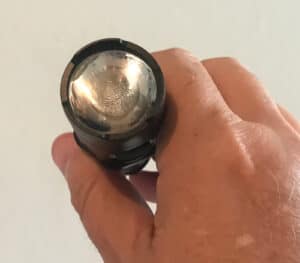 Nitecore’s MH20GT has a very concentrated beam, making it a good choice for people who need a light with a tight beam. The light tested slightly below its stated output level, and more importantly, failed the water immersion test. There were visible water droplets inside the lens the day after our test, and the light was non-functional and would not turn on.
Nitecore’s MH20GT has a very concentrated beam, making it a good choice for people who need a light with a tight beam. The light tested slightly below its stated output level, and more importantly, failed the water immersion test. There were visible water droplets inside the lens the day after our test, and the light was non-functional and would not turn on.
The MH-20GT has no tail-mounted switch. All the operations of the flashlight are done via the body-mounted switch near the head of the light. There is also a USB socket opposite the switch that allows you to recharge the light without removing the battery.
Olight M2R Warrior
Length: 5.37 inches
Width / Max. Diameter: 1.03 inches
Height / Min. Diameter: 0.91 inches
Bezel Diameter: 0.81 inches
Weight w/Battery: 6.31 ounces
Has Clip: Yes
USB Rechargeable: Yes*
Includes Battery: Yes
Battery Type(s): 18650
Material: Aluminum
Modes: Turbo/Hi/Med1/Med2/Lo/X Low
Stated Max Output: 1500 lumens
Tested Max Output: 1374 lumens
Peak Beam Intensity: 6395 candela
Max Heat Output: 149 degrees
Stated Battery Duration: 2 hours
Tested Battery Duration: 1 hour, 50 minutes
Waterproof: IPX8
Passed Water Test: Yes
Passed Dropped Test: Yes
MSRP: $109.95
* Note: Requires a unique adapter to USB connector
Olight M2R Analysis
The output levels of this light tested below their stated levels, and the rear tail cap on the unit we tested felt mushy and uncertain compared to the other lights in our test. The light is USB-rechargeable, but it requires a proprietary adapter for charging rather than the ubiquitous USB connector plug found on other lights.
Pelican 7100
Length: 5.12 inches
Width / Max. Diameter: 1.42 inches
Height / Min. Diameter: 1.42 inches
Bezel Diameter: 1.1 inches
Weight w/Battery: 4.4 ounces
Has Clip: Yes
USB Rechargeable: Yes
Includes Battery: Yes
Battery Type(s): AA/14500
Material: Aluminum/Polymer
Modes: Hi / Med / Low / Strobe
Stated Max Output: 695 lumens
Tested Max Output: 721 lumens
Peak Beam Intensity: 7029 candela
Max Heat Output: 148 degrees
Stated Battery Duration: 1 hour, 9 minutes
Tested Battery Duration: 1 hour, 10 minutes
Waterproof: IPX8
Passed Water Test: Yes
Passed Dropped Test: Yes
MSRP: $85.00
Pelican 7100 Analysis
Pelican made their name making tough, water-resistant cases for cameras and other sensitive gear, and they are extending that legacy into their flashlight line-up. The 7100 uses the same power source as the budget-priced J5 tactical flashlight, but with significantly higher output and a longer runtime. The light offers a USB connector that reveals itself when a ring on the light is twisted, a nice feature that allows you to recharge the battery inside the light, yet still keep the internals safe and sound.
Pelican 7600
Length: 6.19 inches
Width / Max. Diameter: 1.3 inches
Height / Min. Diameter: 0.88 inches
Bezel Diameter: 0.91 inches
Weight w/Battery: 6.9 ounces
Has Clip: Yes
USB Rechargeable: Yes
Includes Battery: Yes
Battery Type(s): 18650
Material: Aluminum/Polymer
Modes: Hi / Med / Lo/ Strobe
Stated Max Output: 944 lumens
Tested Max Output: 1165 lumens
Peak Beam Intensity: 9043 candela
Max Heat Output: 129 degrees
Stated Battery Duration: 3 hours, 9 minutes
Tested Battery Duration: 2+ hours
Waterproof: IPX8
Passed Water Test: Yes
Passed Dropped Test: Yes
MSRP: $95.00
Pelican 7600 Analysis
The 7600 has a distinctive, twistable ring on the front of the light which controls a number of functions. The ring twists to the left from its initial setting in order to change the color of the light from white to red to help you preserve your night vision. Twisting the ring to the right changes the light color to green to better work with night-vision gear, and twisting it even further to the right reveals the USB charging port. In addition to this, you can switching between modes by tapping on the tail switch when in operation, just like many other lights in our test without a secondary control switch.
Streamlight ProTac 2L-X
Length: 5.14 inches
Width / Max. Diameter: 1.35 inches
Height / Min. Diameter: 1.18 inches
Bezel Diameter: 1.08 inches
Weight w/Battery: 4.4 ounces
Has Clip: Yes
USB Rechargeable: No
Includes Battery: Yes
Battery Type(s): 18650*
Material: Aluminum
Modes: Hi/Low/Strobe
Stated Max Output: 500 lumens
Tested Max Output: 778 Lumens
Peak Beam Intensity: 4251 candela
Max Heat Output: 127 degrees
Stated Battery Duration: 3 hours, 15 minutes
Tested Battery Duration: 2+ hours
Waterproof: IPX8
Passed Water Test: Yes
Passed Dropped Test: Yes
MSRP: $75.00
* Note: Requires Streamlight battery
ProTac 2L-X Analysis
The 2L-X uses Streamlight’s internally rechargeable 18650 battery, which has a built-in USB port that connects right to a recharging plug. The light was hot, but not unbearingly uncomfortable to hold during our testing, and the tested maximum output significantly exceeded its stated output.
Streamlight ProTac HL USB
Length: 6.5 inches
Width / Max. Diameter: 1.18 inches
Height / Min. Diameter: 1.05 inches
Bezel Diameter: 0.8 inches
Weight w/Battery: 7.2 ounces
Has Clip: Yes
USB Rechargeable: Yes
Includes Battery: Yes
Battery Type(s): Internal 18650
Material: Aluminum
Modes: Hi / Med / Lo/ Strobe
Stated Max Output: 1000 lumens
Tested Max Output: 1200 lumens
Peak Beam Intensity: 8148 candela
Max Heat Output: 141 degrees
Stated Battery Duration: 1.5 hours
Tested Battery Duration: 1 hour, 40 minutes
Waterproof: IPX4
Passed Water Test: Yes
Passed Dropped Test: Yes
MSRP: $125.00
ProTac HL USB Analysis
The HL USB is a larger tactical flashlight that has an internal battery. The USB recharging socket is hidden beneath a sliding ring near the head of the flashlight, keeping it safe from the elements. Operation of the light and switching between modes is accomplished via Streamlight’s “Ten Tap” system, which varies the output of the light via partial clicks of the tail switch.
Streamlight ProTac HL
Length: 5.25 inches
Width / Max. Diameter: 1.46 inches
Height / Min. Diameter: 0.97 inches
Bezel Diameter: 1.13 inches
Weight w/Battery: 5.6 ounces
Has Clip: Yes
USB Rechargeable: No
Includes Battery: Yes
Battery Type(s): 2xCR123A
Material: Aluminum
Modes: High / Low / Strobe
Stated Max Output: 750 lumens
Tested Max Output: 888 lumens
Peak Beam Intensity: 11280 candela
Max Heat Output: 171 degrees
Stated Battery Duration: 1 hour 9 minutes
Tested Battery Duration: 1 hour 15 minutes
Waterproof: IPX7
Passed Water Test: Yes
Passed Dropped Test: Yes
MSRP: $85.00
ProTac HL Analysis
Rather than use rechargeable lithium-ion or lithium polymer batteries, the Streamlight HL uses two non-rechargeable CR123A lithium batteries. The HL has a concentrated beam that gives it a long throw and bright hot spot. However, the heat put off from the light was quite painful and possibly dangerous.
Heat-resistant gloves would be a good idea if you’re thinking about using this light for an extended period of time.
Streamlight ProTac HL3
Length: 7.1 inches
Width / Max. Diameter: 1.64 inches
Height / Min. Diameter: 0.96 inches
Bezel Diameter: 1.41 inches
Weight w/Battery: 9.3 ounces
Has Clip: Yes
USB Rechargeable: No
Includes Battery: Yes
Battery Type(s): 3xCR123A
Material: Aluminum
Modes: Hi/Low/Strobe
Stated Max Output: 1110 lumens
Tested Max Output: 1217 lumens
Peak Beam Intensity: 23791 candela
Max Heat Output: 141 degrees
Stated Battery Duration: 2 hours
Tested Battery Duration: 1 hour, 50 minutes
Waterproof: IPX7
Passed Water Test: Yes
Passed Dropped Test: Yes
MSRP: $100.00
ProTac HL3 Analysis
The HL3 is another light that requires non-rechargeable CR123A batteries. The light is hefty, and has a large bezel that makes it secure and solid when set down on a surface bezel-first. The beam pattern is rather tight, with a hot spot that gradually falls off from the center, giving you a good compromise between a tight beam for searching at a distance versus a wide beam for good peripheral vision.
Streamlight Stinger 2020
Length: 7.7 inches
Width / Max. Diameter: 1.6 inches
Height / Min. Diameter: 0.75 inches
Bezel Diameter: 1.25 inches
Weight w/Battery: 12.3 ounces
Has Clip:N
USB Rechargeable: Y*
Includes Battery: Y
Battery Type(s): SL-B26
Material: Aluminum/Polymer
Modes: Hi / Med / Lo/ Strobe
Stated Max Output: 2000 lumens
Tested Max Output: 2590 lumens
Peak Beam Intensity: 16650 candela
Max Heat Output: 150 lumens
Stated Battery Duration: 2 hours
Tested Battery Duration: 1 hour, 50 minutes
Waterproof: IPX7
Passed Water Test: No
Passed Dropped Test: Yes
MSRP: $265.00
* Note: Requires a proprietary USB-compatible recharger
Streamlight Stinger Analysis
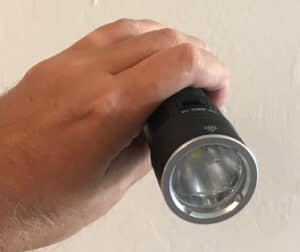 Streamlight’s Stinger 2020 is unique among the flashlights we tested in that it is designed to sit in its charging station until needed. This feature makes it a good choice for law enforcement officers who want to keep a larger light in their vehicle or for homeowners who want a light for their safe room.
Streamlight’s Stinger 2020 is unique among the flashlights we tested in that it is designed to sit in its charging station until needed. This feature makes it a good choice for law enforcement officers who want to keep a larger light in their vehicle or for homeowners who want a light for their safe room.
The light has a tail-mounted on/off switch as well as a body-mounted switch for on/off operations. There is also a toggle switch near the body switch that controls the light output.
The Stinger 2020 exceeded its stated output in our test. It offered a beam with both a bright, distinct hotspot and useful amounts of light around the edges. However, it failed the water immersion test, with a significant amount of water present in the bezel of the flashlight after we exposed it to water.
SureFire Stiletto
Length: 4.45 inches
Width / Max. Diameter: 1.6 inches
Height / Min. Diameter: 0.75 inches
Bezel Diameter: 0.46 inches
Weight w/Battery: 2.8 ounces
Has Clip: Yes
USB Rechargeable: Yes
Includes Battery: Yes
Battery Type(s): Lithium Polymer
Material: Aluminum/Polymer
Modes: High / Low
Stated Max Output: 600 lumens
Tested Max Output: 770 lumens
Peak Beam Intensity: 1417 candela
Max Heat Output: 112 degrees
Stated Battery Duration: 1 hour, 30 minutes
Tested Battery Duration: 1 hour, 35 minutes
Waterproof: IPX7
Passed Water Test: Yes
Passed Dropped Test: Yes
MSRP: $129.00
SureFire Stiletto Analysis
The SureFire Stiletto represents a different approach to the tactical flashlight. The light is specifically designed to be easy to carry in a pocket, and has a thin, flat profile versus the other tube-shaped lights we tested. The tail switch is for momentary use only, and the switch on the body controls the operation and output levels of the light.
The Stiletto was quite comfortable to hold, and did not heat up as much as other lights in our test. The beam from the light is quite wide, with no distinctive hot spot. This limits its usefulness as a searchlight, but it would make an excellent light for assisting with common tasks or lighting up an entire room.
SureFire 6PX Pro
Length: 5.2 inches
Width / Max. Diameter: 1.25 inches
Height / Min. Diameter: 0.95 inches
Bezel Diameter: 0.95 inches
Weight w/Battery: 5.2 ounces
Has Clip:Yes
USB Rechargeable: No
Includes Battery: Yes
Battery Type(s): 2xCR123A
Material: Aluminum
Modes: High / Low
Stated Max Output: 600 lumens
Tested Max Output: 719 lumens
Peak Beam Intensity: 5929 candela
Max Heat Output: 172 degrees
Stated Battery Duration: 1 hour, 30 minutes
Tested Battery Duration: 1 hour, 25 minutes
Waterproof: IPX7
Passed Water Test: Yes
Passed Dropped Test: Yes
MSRP: $85.00
SureFire 6PX Pro Analysis
The body of the 6PX Pro is the latest version of Surefire’s venerable 6P line of tactical flashlights. The light is designed to be a non-nonsense, rugged light for military and law enforcement agencies around the world.
This SureFire light uses non-rechargeable CR123A batteries. It exceeded its stated maximum output in our testing. However, it was very hot to hold after extended use, which means you should probably look to wear a pair of heat-resistant gloves if you are looking to use this light for an extended period of time.
SureFire G2X Tactical
Length: 5.22 inches
Width / Max. Diameter: 1.33 inches
Height / Min. Diameter: 0.86 inches
Bezel Diameter: 0.93 inches
Weight w/Battery: 4.4 ounces
Has Clip: Yes
USB Rechargeable: No
Includes Battery: Yes
Battery Type(s): 2xCR123A
Material: Aluminum/Polymer
Modes: High
Stated Max Output: 600 lumens
Tested Max Output: 760 lumens
Peak Beam Intensity: 6078 candela
Max Heat Output: 118 degrees
Stated Battery Duration: 1 hour, 30 minutes
Tested Battery Duration: 1 hour, 35 minutes
Waterproof: IPX7
Passed Water Test: Yes
Passed Dropped Test: Yes
MSRP: $70.00
SureFire G2X Tactical Analysis
The G2X Tactical is a no-frills tactical flashlight from one of the most-respected names in the business. The light has only one power setting, and uses non-rechargeable CR123A batteries. The polymer body of the light is easy to hold, and the low heat output means this light will be one the most comfortable lights in our test to hold for extended periods of time.
Thrunite TC15 CW
Length: 4.8 inches
Width / Max. Diameter: 1.02 inches
Height / Min. Diameter: 0.87 inches
Bezel Diameter: 0.79 inches
Weight w/Battery: 4.19 ounces
Has Clip: Yes
USB Rechargeable: Yes
Includes Battery: Yes
Battery Type(s): 18650
Material: Aluminum
Modes: Turbo/Hi/Med/Lo/X Low/Strobe
Stated Max Output: 1053 lumens
Tested Max Output: 1309 lumens
Peak Beam Intensity: 5821 candela
Max Heat Output: 165 degrees
Stated Battery Duration: 1 hour, 20 minutes
Tested Battery Duration: 1 hours, 40 minutes
Waterproof: IPX8
Passed Water Test: Yes
Passed Dropped Test: Yes
Price: $79.99
Thrunite TC15 CW Analysis
Thrunite’s TC15 CW tactical flashlight significantly exceeded the stated output from the manufacturer by about 30%.
The light lacks a tail-mounted switch and relies on a body-mounted switch that controls both output levels and on/off functionality. There is a USB socket on the other side of the body from the on/off switch that allows the user to recharge the battery without removing it from the flashlight.
WowTac A7
Length: 4.6 inches
Width / Max. Diameter: 0.99 inches
Height / Min. Diameter: 0.84 inches
Bezel Diameter: 0.78 inches
Weight w/Battery: 5.29 ounces
Has Clip: Yes
USB Rechargeable: Yes
Includes Battery: Yes
Battery Type(s): 18650
Material: Aluminum
Modes: Turbo/Hi/Med/Lo/X Low/Strobe
Stated Max Output: 1047 lumens
Tested Max Output: 1289 lumens
Peak Beam Intensity: 13723 candela
Max Heat Output: 165 degrees
Stated Battery Duration: 2 hours
Tested Battery Duration: 2+ hours
Waterproof: IPX8
Passed Water Test: Y
Passed Dropped Test: Y*
MSRP: $29.99
* Note: Turned off when dropped, but turned back on when picked up
WowTac A7 Analysis
WowTac’s A7 has a tail-mounted switch for on/off and momentary usage as well as a body-mounted switch to change the power level. The light also has a USB socket on the body opposite the output level switch that allows the user to recharge the light with a standard USB-B cord. The light has a concentrated beam with little fall-off, making it useful for people who need a light to search at distance versus flooding an area with light. The A7 switched off when dropped from a height of six feet, but turned back on once retrieved from the concrete floor.
ZebraLight SC600w IV Plus
Length: 3.8 inches
Width / Max. Diameter: 1.18 inches
Height / Min. Diameter: 0.87 inches
Bezel Diameter: 0.92 inches
Weight w/Battery: 3.93 ounces
Has Clip:Yes
USB Rechargeable: No
Includes Battery: No
Battery Type(s): 18650*
Material: Aluminum
Modes: Hi / Med / Lo
Stated Max Output: 2300 lumens
Tested Max Output: 2367
Peak Beam Intensity: 7421 candela
Max Heat Output: 167 degrees
Stated Battery Duration: 1 hour, 48 minutes
Tested Battery Duration: 1 hour, 35 minutes
Waterproof: IPX8
Passed Water Test: Yes
Passed Dropped Test: Yes**
MSRP: $99.00
* Note: Requires a special, non-protected version of the 18650 battery
** Note: Turned off when dropped, but turned back on when picked up
ZebraLight SC600W IV Plus Analysis
ZebraLight’s SC600w IV Plus packs a lot of lumens in a small, compact package. The light uses a shorter, non-protected version of the 18650 Li-Ion battery which lacks the anti-short circuit technology of newer batteries. The light does not come with a battery, and finding a compatible 18650 proved to be a bit of a challenge.
The SC600w IV Plus has a very large amount of lumens for its size, but it heated up quite quickly in our test and stayed hot, making it a poor candidate for use over extended periods of time. The light also switched itself off when dropped from six feet. We did successfully turn it back on once we retrieved it from the concrete floor.
Answering Some Common Questions About Tactical Flashlights
Now that we have these test results to work from, let’s look at some common questions about tactical flashlights, and see what choices we should make based on our test data.
Lumens Are Lumens. Unless They’re Not
The vast majority of the flashlights in our test met or exceeded their stated amount of lumen output. As we said before, though, the lumen output of a flashlight is recorded after 30 seconds of continuous use and that’s what most manufacturers promote. Some flashlights, like the Surefire 6PX Pro, stayed at or near their stated output for half an hour or longer. Other lights such as the Pelican 7100 met their stated output goals but then fell off sharply as their battery power decreased.
Effective power management is what makes the difference between a light with a lumens output that falls off a cliff and a light that stays almost as bright at the end of its battery as when it started out.
The graph below shows how some of the lights in our test that were rated at around 1000 lumens by the manufacturer did after just a few minutes of operation. Some dropped a bit over time, while others quickly reduced power by almost 50%. The bottom line is, if you’re expecting a light to kick out its stated amount of lumens until the battery runs out, you’re probably in store for a bit of a disappointment.
How Hot Is Too Hot For A Tactical Flashlight?
According to a report from the American Society for Testing and Materials, an object that is heated to 111 degrees will “feel hot,” and objects heated to 135 degrees will be very painful to hold. Holding on to an object heated to 125 degrees for only two minutes can cause first degree burns, and just five seconds of contact with an object heated to 140 degrees will start to cause first degree burns and irreversible damage.
Only six flashlights in our test reached a maximum temperature of less than 125 degrees Fahrenheit:
- Klarus XT11
- Pelican 7600
- Surefire Stiletto
- Surefire G2X Tactical
Ten flashlights in our test exceeded 140 degrees maximum temperature. A good pair of heat-resistant gloves is a “must have” if you’re looking to use one of these lights for more than just a few minutes at a time.
- Acebeam EC35 II
- Nitecore MH20GT
- Olight M2R Warrior
- Pelican 7100
- Surefire 6px Pro
- Sreamlight Stinger
- Streamlight HL
- Streamlight HL3 Pro
- Thrunite TC15 V 2.0
- WowTac A7
- Zebralight SC600w
Who Makes The Brightest Tactical Flashlight?
The Surefire Stinger 2020 and ZebraLight SC600w IV Plus are the brightest lights in our test, but they are very different lights to use.
The Stinger 2020 is a large light that kicks out a bright 2600 lumen beam, and the ZebraLight is right next to it with a 2300 lumen output.
However, that’s where the similarities end. The Stinger 2020 is a large light that is meant to reside inside a building or vehicle, and the SC600w IV Plus is much smaller and can be easily carried. The SC600w IV Plus gets quite warm under extended operation, while the Stinger 2020 keeps its cool. The Stinger 2020 failed the water test, and the SC600w IV Plus shut itself off when dropped.
Which is better? Well, to best honest I’d forgo using absolute light output as my yardstick for what makes a good tactical flashlight, and choose something like the Fenix PD35 Tac, which is small enough to carry every day, passed all our tests with flying colors and uses a standard 18650 battery.
Keep in mind that “brightest” doesn’t almost mean “shines a light the longest distance.” Lumens are the raw horsepower of the light, candela is how far they can reach. If you’re looking from something with an exceptionally long reach, the Modlite PLHv2-18650 is definitely a light you should consider.
What Is The Best Affordable Tactical Flashlight?
Dollar for dollar, it’s hard to beat the features of the WowTac A7. 1200+ lumens, a good all-purpose beam shape and well-laid out controls are hard to argue with, especially at what it sells for. The light does come with two downsides, however. The first is, it turned itself off when dropped from a height of two meters in our drop test. The second is that the light gets painfully hot under extended use, which means you’ll need to get a pair of good gloves if you want to use this flashlight for more than a few minutes.
If you didn’t go with the WowTac, the Streamlight 2L-X would be our second choice for an affordable tactical flashlight. Streamlight has been around for decades and they are a trusted provider of tactical flashlights to military and law enforcement. The 2L-X may not have the output of some other lights in its class, but it will be there for you when you need it the most.
What’s The Smallest Tactical Flashlight?
Flashlights are like defensive pistols, they’re only useful if you have one when you need one. A light which kicks out enough lumens to cast a shadow at noon is of little use if it’s in another zip code when you need some extra light. The smallest tactical flashlights in our test were the ZebraLight SC600w IV Plus the J5 Tactical V1 Pro. The ZebraLight however, is much brighter than the J5 Tactical flashlight, so the SC600w IV Plus would be our first choice.
However, “smallest tactical flashlight” can be a number of things. Both the ZebraLight and the J5 Tactical flashlight are rather round and squat. This shape isn’t really that conducive to carrying around in your pocket. The smallest tactical flashlight to carry around with you every day is probably the Surefire Stiletto, which was specifically designed to be easy to carry and work for most of the tasks that an armed citizen might encounter in their everyday life.
Which Tactical Flashlight Is Right For You?
Ultimately, the best tactical flashlight comes down to your particular needs. A high candela light will throw a light a long way, but it will struggle to light up the edges. Low candela lights flood an area with light, but don’t have a hot spot.
What’s best will depend on how you live your life. A light used with a defensive firearm should have a definite hotspot that will help you aim your gun at night or in low light situations. That bright hotspot can also deliver less light at the edges of your vision. This reduces your peripheral vision and can cause you to focus on the hotspot rather than get a bigger picture of what’s going on.
Whatever light you choose, the fact is, we are in a golden age of tactical flashlights right now. New advances in battery technology like Lithium-Ion and Lithium-Polymer batteries means the lights of today are brighter and last longer than the lights of just a few years ago. Plus, computer-aided design and automated production lines reduced the cost of bringing new and innovative lights to market. Today, we enjoy some of the best tactical lights the world has ever seen.
You buy a light because you want to see better at night, and today’s tactical flashlights allow you to do that better than ever before.

